[Editor’s note: be sure to read the comments on this post for more novellas and more Filer reviews.]
By JJ: I’m a huge reader of novels, but not that big on short fiction. But the last couple of years, I’ve done a personal project to read and review as many Novellas as I could (presuming that the story synopsis had some appeal for me). I ended up reading 31 of the novellas published in 2015 and 35 of the novellas published in 2016 (though a few of those were after Hugo nominations closed).
Last year, the result of this was the 2016 Novellapalooza. I really felt as though I was able to do Hugo nominations for the novella category in an informed way, and a lot of Filers got involved with their own comments. So I decided to do it again this year.
The success of Tor’s novella line seems to have sparked a Golden Age for SFF novellas, with Subterranean Press, NewCon Press, PS Publishing, and Book Smugglers jumping on the bandwagon, as well as the Big 3 magazines and the online fiction venues – so there are a lot more novellas to cover this year. Toward the end, I’ve gotten to the point of being more selective about which ones I read, based on the synopsis.
It is not at all uncommon for me to choose to read a book despite not feeling that the jacket copy makes the book sound as though it is something I would like – and to discover that I really like or love the work anyway. On the other hand, It is not at all uncommon for me to choose to read a book in such a case, and to discover that, indeed, the book doesn’t really do much for me.
Thus, my opinions on the following novellas vary wildly: stories I thought I would love but didn’t, stories I didn’t expect to love but did, and stories which aligned with my expectations – whether high or low. Bear in mind that while I enjoy both, I tend to prefer Science Fiction over Fantasy – and that while I enjoy suspense and thrillers, I have very little appreciation for Horror (and to be honest, I think Lovecraft is way overrated). My personal assessments are therefore not intended to be the final word on these stories, but merely a jumping-off point for Filer discussion.
I thought it would be helpful to have a thread where all the Filers’ thoughts on novellas are collected in one place, as a resource when Hugo nomination time rolls around. Which of these novellas have you read? And what did you think of them?
Please feel free to post comments about any other 2017 novellas which you’ve read, as well.
(Be sure to rot-13 any spoilers.)
(fair notice: all Amazon links are referrer URLs which benefit non-profit SFF fan website Worlds Without End)
All Systems Red [The Murderbot Diaries #1], by Martha Wells (excerpt)
Tor.com Publishing, edited by Lee Harris
cover art by Jaime Jones, design by Christine Foltzer
Synopsis: In a corporate-dominated spacefaring future, planetary missions must be approved and supplied by the Company. Exploratory teams are accompanied by Company-supplied security androids, for their own safety. But in a society where contracts are awarded to the lowest bidder, safety isn’t a primary concern. On a distant planet, a team of scientists are conducting surface tests, shadowed by their Company-supplied ‘droid – a self-aware SecUnit that has hacked its own governor module, and refers to itself (though never out loud) as “Murderbot.” Scornful of humans, all it really wants is to be left alone long enough to figure out who it is. But when a neighboring mission goes dark, it’s up to the scientists and their Murderbot to get to the truth.
What I thought: This seems to be the runaway Filer favorite Novella this year, and I’ll add my voice to everyone else raving about this story. Action, suspense, and adventure with a rogue military AI whose personality is displayed subtly and with a slight bit of delightful snark. This is real SF space opera, the way it should be done. #2, Artificial Condition, comes out in May 2018, and #3, Rogue Protocol, will be released in August 2018. Given how much I enjoyed this, I’m going to have to check out Wells’ Raksura series.
Filer Comments:
- Lace: arrived Tuesday and I finished it Wednesday. Fun was had. I enjoyed the narrator and its humans – the book is stuffed full of potential for touching moments of cyborg-human connections, which would happen in a different book and don’t in this one. It’s on the list for now, it may well stay there, and I’ll definitely tune in for future instalments.
- Mark-kitteh: a Tor.com novella that is probably the start of a series (it subtitles itself The Murderbot Diaries) but is nicely self-contained. Its narrator calls themselves “Murderbot” because as a cyborg security unit they don’t have a real name and that’s how the real humans seem to see them, even though behind their armour there’s a more complex intelligence that binge-watches soap operas but can’t stand real life melodrama. So there are two story strands – an action-adventure plot as they are assigned to protect a survey group exploring an alien planet while Shenanigans occur, and exploring the narrator’s character as they react to the group of humans they’ve fallen in with. (If you read Questionable Content then you might see some parallels with the recent storyline there as well.) The adventure plot is good, but the personal storyline is great.
- Greg Hullender: I gave it five stars. I agree wholeheartedly that the development of the character of the “MurderBot” is the strong point of the story, but I loved how the author did such great character development and worldbuilding without a single infodump. All the dialogue was natural. All the narration was transparent. And all the key plot points were adequately foreshadowed. All of that on top of nonstop action.
- Rose Embolism: So, I really enjoyed the excerpt at Tor.com. The problem is. ..now I just can’t help but visualize Murderbot as Bubbles from Questionable Content.
- Linda S: I loved it, and I’ll almost certainly be nominating it for a Hugo next year.
- Ghostbird: I don’t know if I’d call Murderbot a companionable character but I find them very relatable. I’d recommend the book to anyone who’s cultivated detachment in an awful workplace.
- Paul Weimer: The tight first-person point of view really does help here in making Murderbot a relatable character, and Wells shows just how important point of view is to telling the story in the way you want to. I can imagine a good Murderbot novella with a 3rd person limited point of view. We might even get some more details on the worldbuilding that I’d love to have. But we’d lose that deep dive into Murderbot’s mind and soul, and the work, IMO, would be lesser if she had chosen that path. A 2nd person Murderbot story would be interesting, I think.
- Lee: I would say that Murderbot is a compelling character rather than a companionable one. I would also say that their thought processes are a lot like mine when I’m having to put on a polite face while doing something I would very much rather not be doing. I powered my way right thru the story – it dragged me in from the opening scene, and the mystery element was challenging and well-done. It’s definitely got a place on my Hugo nominations for 2018. I notice a thread of similarity between this, the Ancillary trilogy, and A Closed and Common Orbit; they all involve a created intelligence trying to learn how to function beyond its original parameters. This suggests that I’ve got a strong interest in stories which explore that concept and do it well.
- lurkertype: So I read Murderbot last night, and liked the story. It’s really good, and the interactions between Murderbot and the humans are great. Lots of action. I agree with @Lee’s analysis. This is going on my embryonic Hugo list for next year.
- Viverrine: just finished Martha Well’s All Systems Red and can’t wait for more Murderbot stories. Thought it did a great job with the narrator’s perspective.
- Arifel: [It] has already had a lot of deserving hype among Filers – I also loved it and wrote a little bit about it here.
- Eve: My short list is Wells’ All systems red (Murderbot)…
- Bonnie McDaniel: Seconding this rec as well, because of the fantastic title character. (Also because sometimes, the cranky misanthropic Murderbot, with its desire to be left alone with its books entertainment feeds, reminded me of… me.) Seriously, though, I realized that Murderbot is pretty much the anti-Data – the artificial being who doesn’t want to be human. It’s a fresh take on the android trope, and I’m looking forward to the sequel.
- Red Panda Fraction: I finished [it] last night in one sitting, and I really enjoyed it. It’s on my list.
- Kyra: I’ll chime in along with everyone else who’s already recommended this one. A nice novella with tight plotting and a great main character. I like that it didn’t go for easy answers to the protagonist’s issues. I’m looking forward to the sequels.
- Cheryl S.: Count me as very pro Murderbot. As soon as I finished it, I started a re-read.
- Kendall: Y’all have to stop rec’ing things that keep me up two nights in a row. This was excellent, plus it wasn’t what I expected (a good thing, here). The personality, the interactions, the mostly-suppressed-but-expressed emotions – Wells did a great job with everything here. Perfect ending. I look forward to the next two!
- Cassy B: I just bought and read [it] per Kendell’s rec above. And then immediately started evangelizing about this book to everyone I know. I *love* the narrative voice. Absolutely on my Hugo ballot.
- Bookworm1398: So far I have… Murderbot for Best Novella.
- Camestros Felapton: Despite some dark plots, murders and monstrous local fauna, this is a very compassionate story. Beyond Murderbot themselves, the individual characterisation isn’t deep but Wells quickly establishes a feel for what the team Murderbot is protecting is like. A mix of well meaning but wary people, the relationship between the survey team and Murderbot has a strong and plausible arc that gives the story some real soul.
- Chris S.: I have to admit I inhaled this in one sitting, really enjoyed the concept. Origins of the murderbot personality still seem to be a mystery. Would definitely recommend, despite some dodgy plotting.
 And Then There Were (N-one), by Sarah Pinsker (full text)
And Then There Were (N-one), by Sarah Pinsker (full text)
Uncanny Magazine March-April 2017, editor unknown
Synopsis: A quantomologist who discovers how to access parallel universes arranges a convention for attendees who are all versions of herself from slightly divergent universes.
What I thought: This murder mystery novella uses a format familiar to many SFF fans – a convention with keynote speeches and panels on relevant subjects of interest – to provide the setting for an exploration of the theme in Frost’s Road Not Taken. It’s a powerful metafictional musing on choices and consequences and what’s most important in life – and how one’s priorities can change, depending on the results of previous choices. I loved it. This is definitely going on my Hugo Novella ballot.
Filer Comments:
- David Goldfarb: Quick note to all, that I’ve just put [this as] the first work this year on my Hugo longlist record for next year… I found it well-written and amusingly meta, although I did guess in advance the outlines of the solution to the mystery.
- Meredith: Throughly enjoyable multiverse murder mystery where all the suspects are the same person. Ish.
- Lace: a different, introspective read. A bit more con experience could’ve been fun, but what we saw worked. I was also pleased that whodunnit vf bar ynlre qrrcre guna gur boivbhf fbyhgvba jvgubhg orvat bhg bs yrsg svryq.
- Arifel I don’t think I’ve ever read anything quite like this, and I wish it had been twice as long.
- Arifel: wonderful and i keep forgetting it’s a novella as it was published in Uncanny.
- Andrew: I really liked that one and have been recommending it to a lot of folks.
- Laura: Here are my favs so far… Novella: And Then There Were (N-One), Sarah Pinsker
- Short Story Squee and Snark discussion
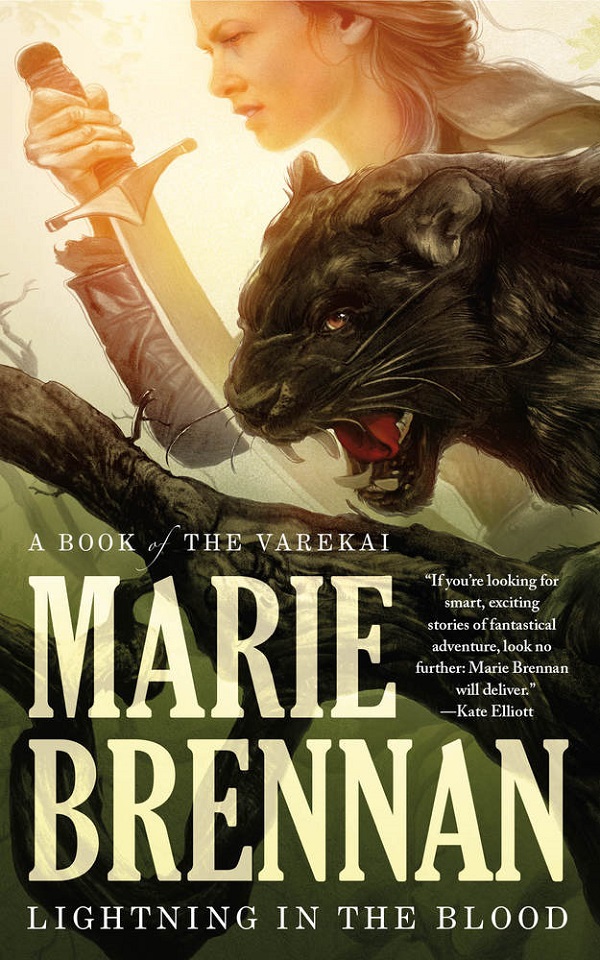 Lightning in the Blood, by Marie Brennan [Ree Varekai #2, sequel to Cold-Forged Flame] (excerpt)
Lightning in the Blood, by Marie Brennan [Ree Varekai #2, sequel to Cold-Forged Flame] (excerpt)
Tor.com Publishing, edited by Miriam Weinberg
cover art by Jaime Jones, design by Christine Foltzer
Synopsis: Once, there was a call – a binding – and so, a woman appeared, present in body but absent in knowledge of her past self. Making the ultimate journey of rediscovery was not without its own pitfalls – or rewards – and now Ree, a roaming archon, spirit of legend and time and physically now bound to her current form, has yet to fully uncover her true identity. Ree has spent her last innumerable seasons on the move – orbiting, in some sense, the lands of her only friend in this world, Aadet, who has become intricately involved in the new post-revolution politics of his people. Swinging back from the forests surrounding Solaike, Ree falls in with another wandering band, some refugees accompanied by their own archon, who seems to know much more about Ree’s own origins than she ever dared to hope.
What I thought: I really enjoyed the first in this series, Cold-Forged Flame, enough to put it on my Hugo ballot last year, and this is a worthy successor. I really love the world and the characters, and I’m looking forward to more in this universe. I thought this series was so good that it convinced me that I need to read the author’s Lady Trent series sooner, rather than later, even though it’s based on a very different premise.
The Runabout, by Kristine Kathryn Rusch [Diving Universe #6] (42677 words) (excerpt)
Asimov’s Science Fiction Mar-Apr 2017 / WMG Publishing, edited by Sheila Williams
Asimov’s cover art by Jim Simpson; WMG cover art by Philcold/Dreamstime, design by Allyson Longueira
Synopsis: A graveyard of spaceships, abandoned by the mysterious Fleet thousands of years earlier. Boss calls it “The Boneyard.” She needs the ships inside to expand her work for Lost Souls Corporation. Yash Zarlengo thinks the Boneyard will help her discover if the Fleet still exists. Boss and Yash, while exploring the Boneyard, discover a small ship with a powerful and dangerous problem: The ship’s active anacapa drive. To escape the Boneyard, Boss must deal with the drive. Which means she’ll have to dive the ship on limited time and under extremely dangerous conditions. And she can’t go alone.
What I thought: I love love love Kristine Kathryn Rusch’s Diving Universe, which saw the release of The Runabout this year (which is currently on my ballot for Best Novella as well as Best Series). The series focuses on a spaceship-wreck-exploration company, and includes time travel and lots of mystery, action and adventure. The Runabout, and its predecessor The Falls, while they each stand alone, are intertwined stories – but I recommend reading the rest of the series from the beginning, because there’s background and worldbuilding, especially in the first 2 books, which really enhance the rest of them.
Filer Comments:
- Greg Hullender: I liked The Runabout so much that I went out and bought the rest of the stories in the series.
Passing Strange, by Ellen Klages (excerpt)
Tor.com Publishing, edited by Jonathan Strahan
cover art by Gregory Manchess, design by Christine Foltzer
Synopsis: San Francisco in 1940 is a haven for the unconventional. Tourists flock to the cities within the city: the Magic City of the World’s Fair on an island created of artifice and illusion; the forbidden city of Chinatown, a separate, alien world of exotic food and nightclubs that offer “authentic” experiences, straight from the pages of the pulps; and the twilight world of forbidden love, where outcasts from conventional society can meet. Six women find their lives as tangled with each other’s as they are with the city they call home. They discover love and danger on the borders where magic, science, and art intersect.
What I thought: This story is loosely based on the life of Margaret Brundage, a prolific artist of more than 70 covers plus many interior illustrations for the early SFF pulp magazines (primarily Weird Tales). While the SFFnal elements are slight until the end, I really loved the way the story captured the cultural context of that time and place, as well as telling a poignant story of love and friendship, with beautifully-realized characters. I enjoyed this so much that I was sorry to see it end, and it will definitely be on my Hugo ballot.
Filer Comments:
- Mark-kitteh: I was going to pass on this because the concept sounded far too light on fantastic elements for my tastes, but some rave reviews persuaded me to try it. I was right that it was very light on the actual fantasy, but it was beautifully written with compelling characters and relationships, and the historical elements of 40s San Francisco were fascinating, so I’m glad I picked it up.
- Kurt Busiek: Started reading [it] last night, and so far it’s terrific.
The Memoirist, by Neil Williamson (no excerpt)
NewCon Press, edited by Ian Whates
cover art by Chris Moore, design by Andy Bigwood
Synopsis: In a near future where everyone is wired to an interactive evolution of the Internet, ubiquitous tiny recording drones which make everyone’s personal lives fodder for public consumption are an accepted fact of life. A young journalist scores a rare, highly-enviable job writing the memoirs of the reclusive retired lead singer from a historically-famous rock band which mysteriously broke up after something happened… but despite rumors and speculation, no one knows what that something actually was. Why are so many powerful people determined to wipe a poignant gig by a faded rock star from the annals of history? What are they so afraid of? Rhian has no idea of the dangerous path she is treading, nor the implications of her discoveries, which may well alter the course of human history…
What I thought: I really, really liked this story. It blends a realistic projection of future technology with an intriguing mystery. I think that fans of Sarah Pinsker’s Our Lady of the Open Road might really enjoy this one.
The Ghost Line, by Andrew Neil Gray and J. S. Herbison (excerpt)
Tor.com Publishing, edited by Carl Engle-Laird
cover art by John Harris, design by Christine Foltzer
Synopsis: The Martian Queen was the Titanic of the stars before it was decommissioned, set to drift back and forth between Earth and Mars on the off-chance that reclaiming it ever became profitable for the owners. For Saga and her husband Michel, the cruise ship represents a massive payday. Hacking and stealing the ship could earn them enough to settle down, have children, and pay for the treatments to save Saga’s mother’s life. But the Martian Queen is much more than their employer has told them. In the twenty years since it was abandoned, something strange and dangerous has come to reside in the decadent vessel. Saga feels herself being drawn into a spider’s web, and must navigate the traps and lures of an awakening intelligence if she wants to go home again.
What I thought: I thought that the worldbuilding and characterization in this space opera mystery about an awakening AI were really well-done, and am hoping for more from the authors in this universe. Depending on how my Hugo ballot shakes out, this could be in the running for an appearance on it.
Penric’s Fox, by Lois McMaster Bujold [Penric #5, sequel to Penric and the Shaman] (no excerpt)
Spectrum Literary Agency, editor unknown
cover art and design by Ron Miller
Synopsis: Some eight months after the events of Penric and the Shaman, Learned Penric, sorcerer and scholar, travels to Easthome, the capital of the Weald. There he again meets his friends Shaman Inglis and Locator Oswyl. When the body of a sorceress is found in the woods, Oswyl draws him into another investigation; they must all work together to uncover a mystery mixing magic, murder and the strange realities of Temple demons.
Filer Comments:
- Lace: takes place after Penric and the Shaman, with some supporting characters in common. I liked this one more than the pair starting with Penric’s Mission. It’s in the middle of my pack of maybes for the Hugo ballot, though I’ve only collected a couple of probables so far.
- Kendall: Bujold goes back in time to write a story connected to (and not long after, IIRC) Penric and the Shaman. I enjoy the Penric & Desdemona novellas a lot; this is a very good addition to the line-up, a little mystery-adventure with more talk about cbffvoyr pbaarpgvbaf orgjrra qrzbaf naq funznavp cbjref.
Mira’s Last Dance, by Lois McMaster Bujold [Penric #4, sequel to Penric’s Mission] (audio excerpt)
Spectrum Literary Agency, editor unknown
cover art and design by Ron Miller
Synopsis: The injured Penric, a Temple sorcerer and learned divine, tries to guide the betrayed General Arisaydia and his widowed sister Nikys across the last hundred miles of hostile Cedonia to safety in the Duchy of Orbas. In the town of Sosie, the fugitive party encounters unexpected delays, and even more unexpected opportunities and hazards, as the courtesan Mira of Adria, one of the ten dead women whose imprints make up the personality of the chaos demon Desdemona, comes to the fore with her own special expertise.
Filer Comments:
- ULTRAGOTHA: my least favorite so far of her Penric stories. There doesn’t seem to be as much there there, this time. There will probably be another Penric story as this one ends in a good place for it to end, but there’s obviously more to come. It takes up immediately after Penric’s Mission with the same three characters (or 15 if you count the Lioness and the Mare). I find Bujold’s stories always, always, improve on re-reading. It’s extraordinary how she manages to do that! So I suspect I’ll like it better the next time around.
- Arifel: I have to give a massive “wait what????” to. Of course it’s all good solid well written Bujold fun, but the main plot makes light of transphobia and violence against sex workers in a way i was really disappointed by (the more spoilery elaboration is that Craevp, jvgu n cnegvphyne snprg bs Qrfqrzban ng gur uryz, ratntrf va na riravat bs frk jbex jvgu n urgrebfrkhny zna juvyr cnffvat nf n jbzna, naq zbfg bs gur punenpgref rkcrpg gur phfgbzre gb erfcbaq jvgu ivbyrapr vs Craevp vf bhgrq – fb sne fb ernyvfgvp, naq V unir ab crefbany vffhr jvgu gur jnl frk jbex be traqre naq frkhnyvgl ner cerfragrq va n ernfbanoyl znggre bs snpg jnl, ohg V URNIVYL dhrfgvba Ohwbyq’f qrpvfvba gb cynl nyy guvf nf n uhzbebhf fbhepr bs grafvba.)
The Prisoner of Limnos, by Lois McMaster Bujold [Penric #6, sequel to Mira’s Last Dance] (no excerpt)
Spectrum Literary Agency, editor unknown
cover art and design by Ron Miller
Synopsis: Temple sorcerer Penric and the widow Nikys have reached safety in the duchy of Orbas when a secret letter from a friend brings frightening news: Nikys’s mother has been taken hostage by her brother’s enemies at the Cedonian imperial court, and confined in a precarious island sanctuary. Their own romance still unresolved, Nikys, Penric, and of course Desdemona must infiltrate the hostile country once more, finding along the way that family relationships can be as unexpectedly challenging as any rescue scheme.
What I thought: I will say that while I have really enjoyed all of the Penric novellas, possibly Penric’s Mission (which was actually well into novel length) might be the only one I really felt rose to Hugo level for me. Both last year, and this year (so far), the rest of them are in my Top 10 but not in my Top 5. They’re great stories, but they seem a bit slight compared to the Vorkosigan stories; they’re solid but not exceptional. That’s probably a function of length, but also probably of their “quietness”. I suspect that if Mission / Dance / Prisoner had been released as one novel, they’d have more of an impact for me. (I re-read Mission before reading Dance, and I re-read Dance before reading Prisoner. For those who have the ability and the reading time to do that, I recommend doing so.)
Filer Comments:
- Mark-kitteh: The new Penric is good.
- techgrrl1972: I loved the new Penric, although I don’t always appreciate Lois’ choice of where to stop. It’s not like she needs these sortakinda cliffhangers to draw us back for the next instalment!
- JJ: I wouldn’t necessarily say that it ends with a cliffhanger. It stops at a logical place, having completed this particular story, but with plenty of seeds dropped for future adventures.
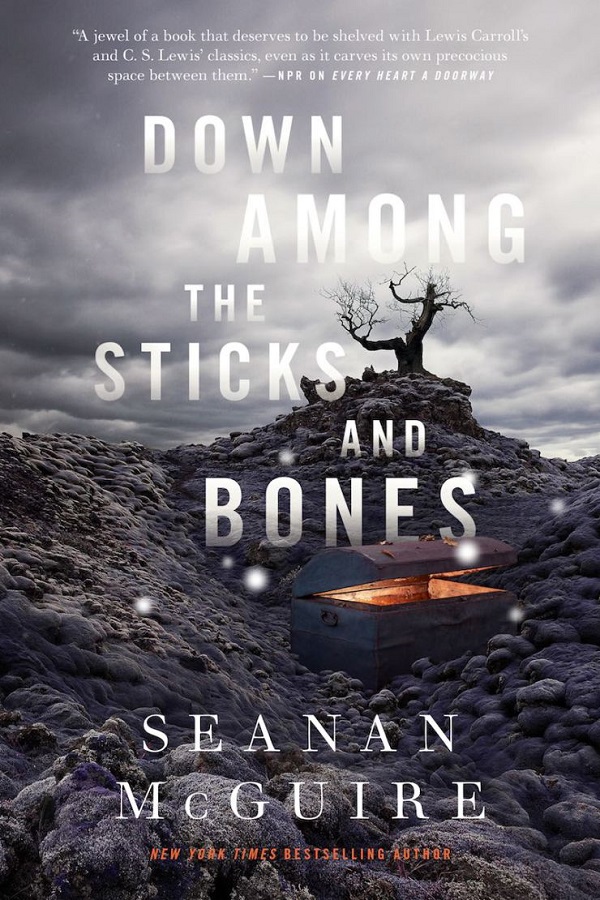 Down Among the Sticks and Bones, by Seanan McGuire [Wayward Children #2, prequel to Every Heart A Doorway] (excerpt Ch 1-2) (audio excerpt Ch 3)
Down Among the Sticks and Bones, by Seanan McGuire [Wayward Children #2, prequel to Every Heart A Doorway] (excerpt Ch 1-2) (audio excerpt Ch 3)
Tor.com Publishing, edited by Lee Harris
cover photographs by Getty Images, design by FORT
Synopsis: Twin sisters Jack and Jill were seventeen when they found their way home and were packed off to Eleanor West’s Home for Wayward Children. This is the story of what happened first… Jacqueline was her mother’s perfect daughter – polite and quiet, always dressed as a princess. If her mother was sometimes a little strict, it’s because crafting the perfect daughter takes discipline. Jillian was her father’s perfect daughter – adventurous, thrill-seeking, and a bit of a tom-boy. He really would have preferred a son, but you work with what you’ve got. They were five when they learned that grown-ups can’t be trusted. They were twelve when they walked down the impossible staircase and discovered that the pretense of love can never be enough to prepare you a life filled with magic in a land filled with mad scientists and death and choices.
What I thought: I really enjoyed the first novella, and this one provides some good character development for the twin sisters from that story. I re-read the first one after reading this, so the inconsistency between the two endings – probably an artifact of trying to retrofit a prequel after the later story has been published – was rather obvious. Nevertheless, I thought this was very good, but it didn’t quite reach the level of Doorway for me. The third novella, Beneath the Sugar Sky, comes out in January 2018.
Filer Comments:
- Beth in MA: Premise: What happened to Jack and Jill before Every Heart a Doorway? We find out about the world they went to and what happened there. I picked this up on my birthday weekend trip and really loved it! The world is creepy and yet, the real world for the twins was creepy too. In fact, in some ways, the real world for them was worse. We see how that world affected them in the otherworld they visited. It is definitely at the top of my 2017 novella longlist.
- Chip Hitchcock: So with the discussion of Every Heart a Doorway coming back, has anyone else read the partial prequel, Down Among the Sticks and Bones? I just finished it and am very torn; it’s a powerful story, but there’s much more telling than showing, including a lot of “this is the way Story goes” lines. It’s possible that showing would have taken a much larger book (a very fast count suggests it’s 30-35K words), or even technique McGuire doesn’t have yet (based on my having read most of what’s she’s written), or maybe she’s deliberately writing something that might be called interpreted fiction?
- Peer Sylvester: Just finished [it]. The short version: Its the Roald Dahlish backstory of Jack and Jill and thats a bit of a problem, because Jack has revealed her backstory in Doorway already and this is just the fleshed-out-version of said backstory. So, there is not much room for surprises here. But its beautifully written – again! If you like Seanan McGuires writing style (and I very much do), you will enjoy this as well. I just hope the third wayward children book will offer a bit more in terms of story.
- Kendall: I listened to McGuire narrate her novella Down Among the Sticks and Bones this week; she was a pretty good narrator. The book was good, but I liked the first one better. Two minor criticisms (leaving off a third tiny nit I was going to pick): There was too much “I will now talk about how I’m telling you the story that you’re reading” and faux-children’s-book stuff. The former (weirdly) seems like it would work better in print, and was a little clunky; the latter isn’t really my style. Am I misremembering the first novella – did it do this, too?! I want to re-listen anyway, to see the twins now that I’ve listened to the prequel. The twins’ pre-door back story should’ve been shorter. The background helped us understand how they became the people that made the choices they did in the Moors, and how they developed into the characters we met in the first book. But it was too long and a bit tedious. Also, it was the most juvenile-written part (as in, seemingly written for juveniles), too, which isn’t to my taste. The Moors remind me of D&D’s Ravenloft – in a good way. I was very interested to see Qbpgbe Oyrnx pbhyq perngr n qbbe; and to see fbzrbar jub jrag guebhtu n qbbe ohg unq n snvyrq “fgbel” naq jnf genccrq, rgp. Anyway, overall, I enjoyed it and look forward to the next one.
- Karl-Johan Norén: @Kendall: Every Heart a Doorway is very straightforwardly narrated, so no, it differed from [this one] both in tone and in narrative style. I think the main trouble with Sticks and Bones is twofold: first it’s a prequel, so you have start and end points set, second any story set in McGuire’s fairylands is likely to depend heavily on narrative causality. I’m not sure she has leveled up as an author enough yet to tackle works that explore works of narrative causality yet (not like, say, Cat Valente or the late Terry Pratchett).
- David Goldfarb: I just finished reading [it], and my socks were knocked off to the extent that it made me go back and re-read “Every Heart a Doorway”. The first time I read Heart I was annoyed by some of its flaws (chiefly that I found the solution of the mystery plot a bit obvious), but this time I was able to focus more on the themes of self-acceptance.
- Bonnie McDaniel: I actually liked this better than Every Heart a Doorway, as it lacked the somewhat distracting murder mystery plot. This tightly written backstory of Jack and Jill, and nightmare parenting, pulls no punches. At the end, the reader knows just what the twins found in their portal world of the Moors, and understands why they would do anything to return there.
- Arifel: (specifically the audiobook version read by the author: ) I find it hard to pay attention to audio for long periods of time, but I listened to the whole 4 hours of this in almost one sitting without getting distracted. It’s a powerful story about femininity and sisterhood which worked better for me on a first pass than Every Heart A Doorway. Excellent narration. Will be very surprised if this isn’t on All The Lists at the end of the year
 Dusk or Dark or Dawn or Day, by Seanan McGuire (excerpt)
Dusk or Dark or Dawn or Day, by Seanan McGuire (excerpt)
Tor.com Publishing, edited by Lee Harris
cover photographs by Emma Cox and Corey Weiner, design by Jamie Stafford-Hill
Synopsis: When her sister Patty died, Jenna blamed herself. When Jenna died, she blamed herself for that, too. Unfortunately Jenna died too soon. Living or dead, every soul is promised a certain amount of time, and when Jenna passed she found a heavy debt of time in her record. Unwilling to simply steal that time from the living, Jenna earns every day she leeches with volunteer work at a suicide prevention hotline. But something has come for the ghosts of New York, something beyond reason, beyond death, beyond hope; something that can bind ghosts to mirrors and make them do its bidding. Only Jenna stands in its way.
What I thought: I really enjoyed this story. McGuire’s work, in my opinion, ranges from very good to absolutely fantastic. I’d put this one in the very good range; I thought that it was solid and well-done, but not exceptional.
Filer Comments:
- Mark-kitteh: This is… a separate standalone in a new continuity. Any description of the plot spoils a well-played reveal early in the story so I’m going to keep quiet, but it’s just as readable as you’d expect from McGuire. What I particularly liked was that it had some of the older Urban Fantasy feel of being about people and places and the connections between the two. There’s an element that deserves a content note (rot13 although it’s also obvious from the blurb: Gur znva punenpgre jbexf ng n fhvpvqr ubgyvar naq ure fvfgre pbzzvggrq fhvpvqr) but I believe it’s handled sensitively.
- Peer Sylvester: Thanks to the Filers who recommended [this]! It was just the right read for a sick day in bed… Easy, but very nice indeed, great world Building, great characters, just the story was a bit on the thin side. But beautiful written and as I sad good “Comfy-iterature” (And yes, its best to go in it totally “cold”, i.e. knowing nothing about the story)
- Cassy B.: A compelling ghost story… written from the point of view of the ghost.
Idle Ingredients, by Matt Wallace [Sin du Jour #4, sequel to #1 Envy of Angels, #2 Lustlocked, and #3 Pride’s Spell] (excerpt)
Tor.com Publishing, edited by Lee Harris
cover photograph by Getty Images, design by Peter Lutjen
Synopsis: Catering for a charismatic motivational speaker, the staff of the Sin du Jour catering agency find themselves incapacitated by a force from within their ranks. A smile and a promise is all it took. And for some reason, only the men are affected. It’s going to take cunning, guile and a significant amount of violence to resolve. Another day of cupcakes and evil with your favorite demonic caterers.
Greedy Pigs, by Matt Wallace [Sin du Jour #5] (excerpt)
Tor.com Publishing, edited by Lee Harris
cover photograph by Getty Images, design by Peter Lutjen
Synopsis: Politics is a dirty game. When the team at Sin du Jour accidentally caters a meal for the President of the United States and his entourage, they discover a conspiracy that has been in place since before living memory. Meanwhile, the Shadow Government that oversees the co-existence of the natural and supernatural worlds is under threat from the most unlikely of sources. It’s up to one member of the Sin du Jour staff to prevent war on an unimaginable scale. Between courses, naturally.
Gluttony Bay, by Matt Wallace [Sin du Jour #6] (excerpt)
Tor.com Publishing, edited by Lee Harris
cover photograph by Getty Images, design by Peter Lutjen
Synopsis: Welcome to Gluttony Bay High Security Supernatural Prison. We value your patronage. For your entertainment this evening, we are delighted to welcome the world’s most renowned paranormal culinary experts. And on the menu: You.
What I thought: I’m another that loves this series: for the appealing characters, the inventiveness of the otherworldly cuisine, the humor which is great without going over-the-top into cringeworthy, and the way he intertwines the supernatural world with the real world so deftly that it’s utterly believable. Content note: While all of the novellas have some element of gore and/or violence, Gluttony Bay is particularly so. The 7th (and ostensibly the last) Deadly Sin du Jour book, Taste of Wrath, comes out in April 2018.
Filer comments on the Sin du Jour series:
- Alasdair: One of the Crown Jewels of Tor’s novella lone. Inventive, funny and immensely confident writing.
- Greg Hullender: The biggest problem I have with this series is that there are too many characters, and they can be hard to tell apart. As a consequence, the individual stories (apart from “Small Wars”) don’t stand alone very well.
- Kendall: I love this series!
- Cheryl S.: I really love this series and look forward to every new novella, because they’re terrific; well written, with interesting, offbeat characters that grow in unexpected directions. Plus, there’s always something funny but totally plausible in each one (Goblin King anyone?).
- Kendall: I also finished Greedy Pigs last night – the latest “Sin du Jour” novella. I read Idle Ingredients… and they’re more closely connected plot-wise than previous entries, ISTM… I enjoyed earlier entries a little more, but I can’t pinpoint why, sorry. Unrelated, but it seemed like there was less food?! LOL. I like that Darren’s and especially Lena’s characters are developing, in these two novellas, and I look forward to the final two entries in the series.
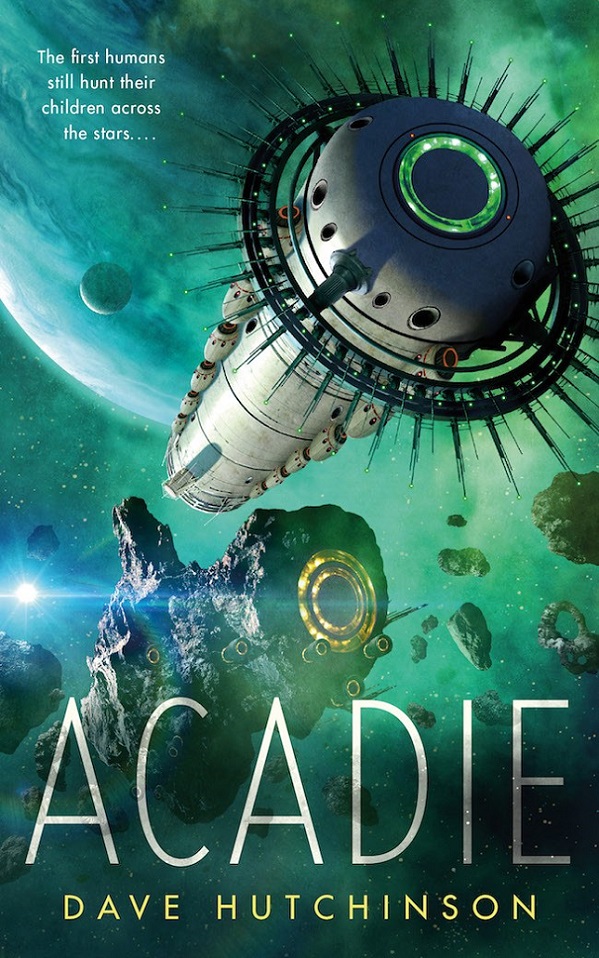 Acadie, by Dave Hutchinson (excerpt)
Acadie, by Dave Hutchinson (excerpt)
Tor.com Publishing, edited by Lee Harris
cover art by Stephen Youll, design by Christine Foltzer
Synopsis: The Colony left Earth to find their utopia – a home on a new planet where their leader could fully explore the colonists’ genetic potential, unfettered by their homeworld’s restrictions. They settled a new paradise, and have been evolving and adapting for centuries. Earth has other plans. The original humans have been tracking their descendants across the stars, bent on their annihilation. They won’t stop until the new humans have been destroyed, their experimentation wiped out of the human gene pool. Can’t anyone let go of a grudge anymore?
What I thought: This is an interesting story and an enjoyable read, but perhaps suffers a bit in execution by comparison to similar stories; explaining why would be spoiling the story, so I’ll just suggest reading this if the synopsis appeals to you.
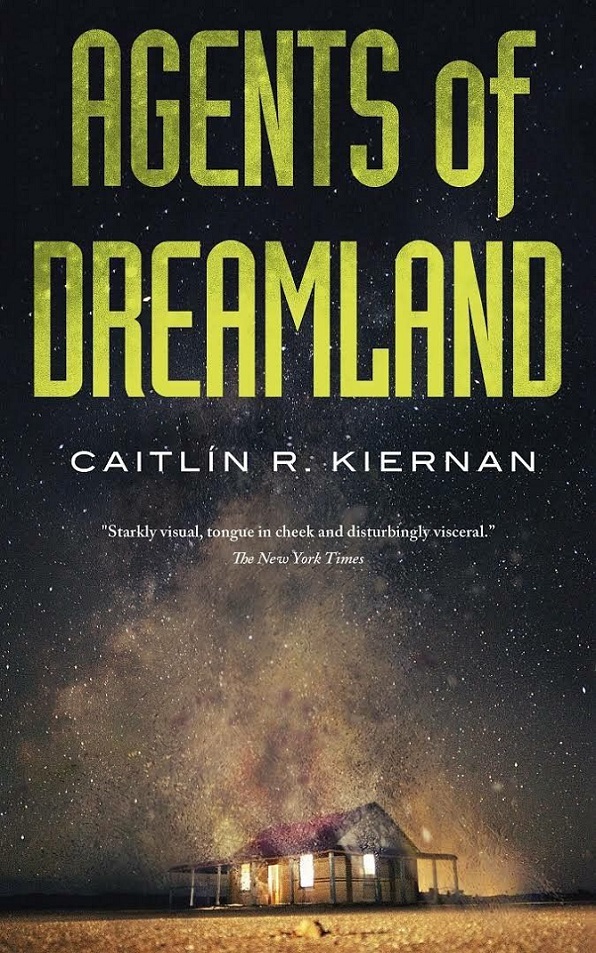 Agents of Dreamland, by Caitlín R. Kiernan (excerpt)
Agents of Dreamland, by Caitlín R. Kiernan (excerpt)
Tor.com Publishing, edited by Jonathan Strahan
cover photograph by Getty Images, design by Christine Foltzer
Synopsis: A government special agent known only as the Signalman gets off a train on a stunningly hot morning in Winslow, Arizona. Later that day he meets a woman in a diner to exchange information about an event that happened a week earlier for which neither has an explanation, but which haunts the Signalman. In a ranch house near the shore of the Salton Sea a cult leader gathers up the weak and susceptible – the Children of the Next Level – and offers them something to believe in and a chance for transcendence. The future is coming and they will help to usher it in. A day after the events at the ranch house which disturbed the Signalman so deeply that he and his government sought out help from ‘other’ sources, Johns Hopkins Applied Physics Laboratory abruptly loses contact with NASA’s interplanetary probe New Horizons. Something out beyond the orbit of Pluto has made contact. And a woman floating outside of time looks to the future and the past for answers to what can save humanity.
What I thought: There are a lot of elements in this work which will only really have meaning for someone who has at least a passing familiarity with Lovecraft’s works. I found it to be more of a “and then this happened… and then this happened…” story, and less what I’d consider a story with a plot and a resolution (but I guess that description would apply to a lot of Lovecraft works). In a review of Dreamland, James K. Nelson says “enough is resolved to satisfy the reader, but we never fully get our bearings on the forces at work. ” I’m going to disagree with him on that; I didn’t think that enough is revealed to be satisfying. I do think that Lovecraft fans will enjoy this, though.
Filer Comments:
- PhilRM: Two agents from separate, mysterious government agencies – a man known only as the Signalman, and a woman who is even more mysterious than the agency she works for – meet in Winslow, Arizona to trade information on a horrifying event that occurred in a decaying house near the Salton Sea, an event that proves to be only the latest in a series, and will not be the last. No one does modern-day Lovecraft better than Kiernan: this searing, disturbing novella takes place in a universe that, at best, is bleak and indifferent. It also lies at the SF end of the SF/horror spectrum, as in most of late Lovecraft. You will benefit from having read Lovecraft’s The Whisperer in Darkness, but it’s not required. Beautifully written and as dark as a dream of Yuggoth.
- Mark-kitteh: Another in [Tor.com’s] mini-theme of Lovecraftian stories… and probably the one least likely to be accessible to non-fans of Lovecraft. It’s a rather twisty tale about an unnamed investigator looking into a weird cult with a sense of quiet desperation, while a prescient colleague follows similar threads with quiet acceptance. It was suitably moody but I wasn’t that taken with it.
- Bonnie McDaniel: I loved this. It’s dense, complex, non-linear, with great characterizations and beautiful writing. It’s a surprisingly successful, if bizarre, blending of Lovecraft and The X-Files, with an alien invasion fit to give anyone nightmares. It’s a shame Kiernan isn’t better known, and it would be great if this story could change that. For the moment, at the top of my Hugo list.
- Rob Thornton: I wasn’t too hot on Kij Johnson’s Dream-Quest of Vellitt Boe (paled next to the original despite the 21c updates) but Kiernan’s Dreamland truly captures the feverishly bizarre quality of good Lovecraftian fiction. Highly recommended and of course it is on my Hugo list.
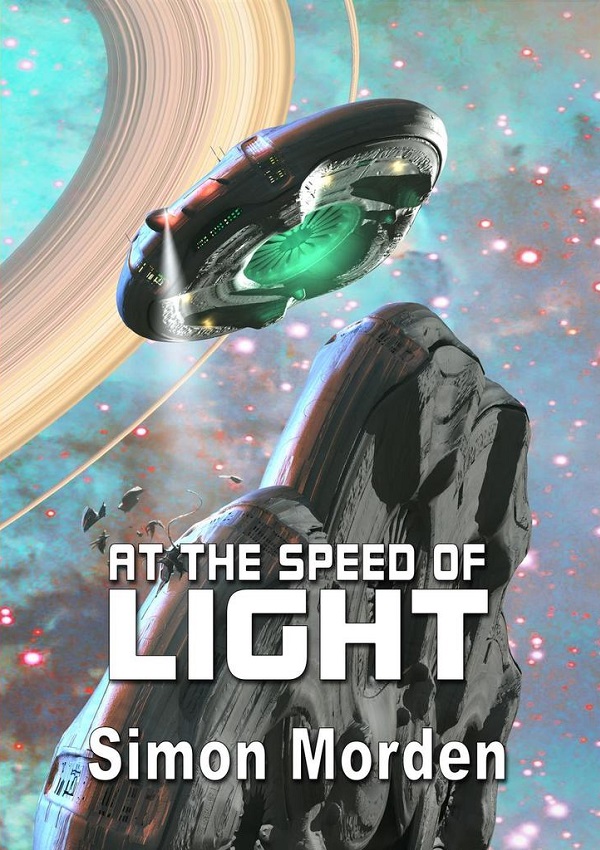 At the Speed of Light, by Simon Morden (no excerpt)
At the Speed of Light, by Simon Morden (no excerpt)
NewCon Press, edited by Ian Whates
cover art by Chris Moore, design by Andy Bigwood
Synopsis: A breathless drama set in the depths of space. Aboard a ship that has travelled beyond the reach of human knowledge, Corbyn discovers he is not as alone as he ought to be.
What I thought: A novella about how a near-light-speed vehicle might work, with an uploaded mind as an AI and adaptable drones, and the technical aspects of relativity and maneuvering at such a speed. I found it very Interesting, but the plot, such as it is, is just set dressing for the technical aspects. I’m not sorry I read it, but I can’t enthuse about it either. I gave it 3.5 stars. Morden has a murder mystery set on Mars, One Way, coming out in February 2018 (under the name S.J. Morden), which sounds good enough that I’m already on my library’s waiting list for it.
Filer Comments:
- Mark-kitteh: I read [it] as well, and I’d totally agree – all the clever science couldn’t cover for a rather meh story.
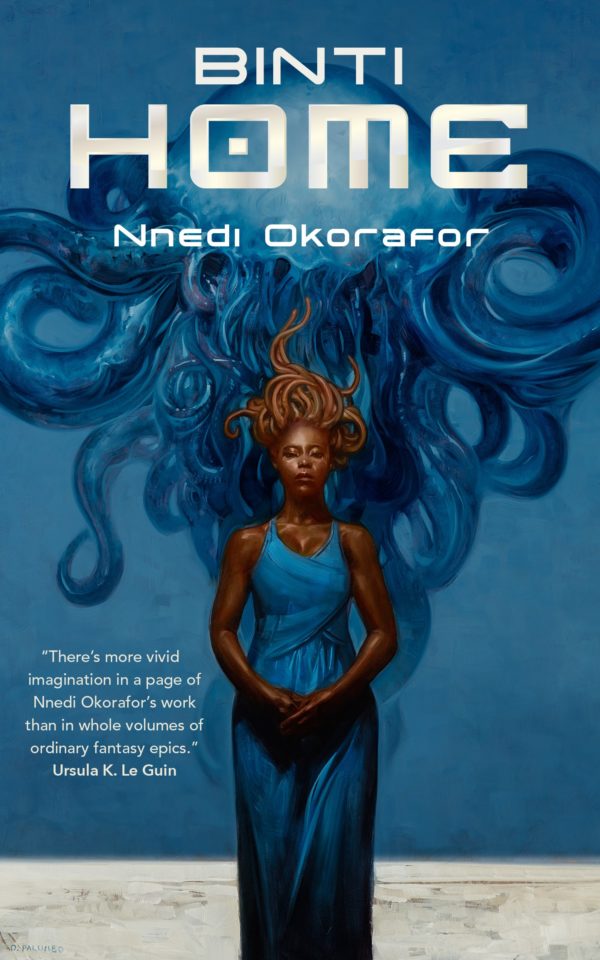 Binti: Home, by Nnedi Okorafor [Binti #2, sequel to Binti] (excerpt)
Binti: Home, by Nnedi Okorafor [Binti #2, sequel to Binti] (excerpt)
Tor.com Publishing, edited by Lee Harris
cover art by Dave Palumbo, design by Christine Foltzer
Synopsis: It’s been a year since Binti and Okwu enrolled at Oomza University. A year since Binti was declared a hero for uniting two warring planets. A year since she found friendship in the unlikeliest of places. And now she must return home to her people, with her friend Okwu by her side, to face her family and face her elders. But Okwu will be the first of his race to set foot on Earth in over a hundred years, and the first ever to come in peace. After generations of conflict can human and Meduse ever learn to truly live in harmony?
What I thought: Like the previous novella, this story has some interesting world-building – but like the previous one, it relies on another deus ex machina in the third act to get where it wants to go. It’s well worth reading, but won’t be on my Hugo ballot.
Filer Comments:
- Arifel: a very worthy continuation of 2015’s winner, and I’m very excited to see how the final(?) installment [Binti: The Night Masquerade, coming out in January 2018] pans out.
Brother’s Ruin, by Emma Newman [Industrial Magic #1] (excerpt)
Tor.com Publishing, edited by Lee Harris
cover art by Cliff Nielsen, design by Christine Foltzer
Synopsis: The year is 1850 and Great Britain is flourishing, thanks to the Royal Society of the Esoteric Arts. When a new mage is discovered, Royal Society elites descend like buzzards to snatch up a new apprentice. Talented mages are bought from their families at a tremendous price, while weak mages are snapped up for a pittance. For a lower middle class family like the Gunns, the loss of a son can be disastrous, so when seemingly magical incidents begin cropping up at home, they fear for their Ben’s life and their own livelihoods. But Benjamin Gunn isn’t a talented mage. His sister Charlotte is, and to prevent her brother from being imprisoned for false reporting she combines her powers with his to make him seem a better prospect. When she discovers a nefarious plot by the sinister Doctor Ledbetter, Charlotte must use all her cunning and guile to protect her family, her secret and her city.
Filer Comments:
- Mark-kitteh: This is a Victorian urban fantasy, although apparently they want us to call it a Gaslamp Fantasy which, hmm, let’s see if it catches on. It’s the start of a series and does an ok-but-not-brilliant job of being a standalone story, mostly setting up the world and getting some initial plot, which is that magic in England is controlled by three competing Guilds, rogue mages are caught and forcefully enrolled, and there’s something non-specifically rotten going on with the whole system, which our protagonist will undoubtedly be bumbling into at some point. Speaking of our protagonist, Charlotte is an artist who is already hiding her mundane talent under a bushel by illustrating under a male pseudonym, which leads neatly into the inevitable discovery that she’s also hiding a non-mundane talent under a bushel too… Anyway, Emma Newman is a good writer of UF already, and so this is a good piece of UF and I like the (ahem) gaslamp setting, but I ended up feeling a bit like I’d been served up the first third of a novel. I’ll be picking up the sequel(s) but I really wish first volumes would be a bit more standalone, and if you’re likely to be frustrated by that then you might want to hold off.
- Kendall: first of two (or four, if they sell well!) in the Industrial Magic set of novellas, which Tor’s calling gaslamp fantasy. IIRC it’s around the 1850s, around the industrial revolution, but powered by magic. Magi are required to work for the Crown via the Royal Society and can’t marry or pursue other endeavors. Hiding your magic (or even not reporting someone else you know has magic) is against the law. It’s all a bit dire and draconian, which makes a good setup for tension and paranoia on the part of the main character – a woman hiding her magic, and a career as an artist, to boot. Anyway, I enjoyed this a lot… there’s a lot of setup here, but for me there was enough plot and intrigue that it felt like a complete story, while obviously setting up the next novella(s). I hope there are more than two; I enjoyed it a lot. It’s way to early to say whether it would be on my Hugo list, but I definitely recommend it!
- Arifel: great, with an interesting worldbuilding setup and a slightly thin but compelling enough cast, but it does feel like the first third of a really interesting novel, not a complete story in itself – looking forward to more but I recommend anyone who likes solid resolution at the end of their reading hold off for now.
- Chip Hitchcock: I was looking forward to this as I liked her other fantasy, but was disappointed by [this] first book.
Weaver’s Lament, by Emma Newman [Industrial Magic #2] (excerpt)
Tor.com Publishing, edited by Lee Harris
cover art by Cliff Nielsen, design by Christine Foltzer
Synopsis: Charlotte is learning to control her emerging magical powers under the secret tutelage of Magus Hopkins. Her first covert mission takes her to a textile mill where the disgruntled workers are apparently destroying expensive equipment. And if she can’t identify the culprits before it’s too late, her brother will be exiled, and her family dishonoured…
What I thought: As others have mentioned, these are parts 1 and 2 of a 3-part novel, and may not be satisfying when read individually. I read all 5 of the author’s Split Worlds novels earlier this year, and I really enjoyed them (enough for it to be a Best Series contender), but these first two Industrial Magic novellas feel a lot like re-treads of that series, and I can’t get really enthused about them.
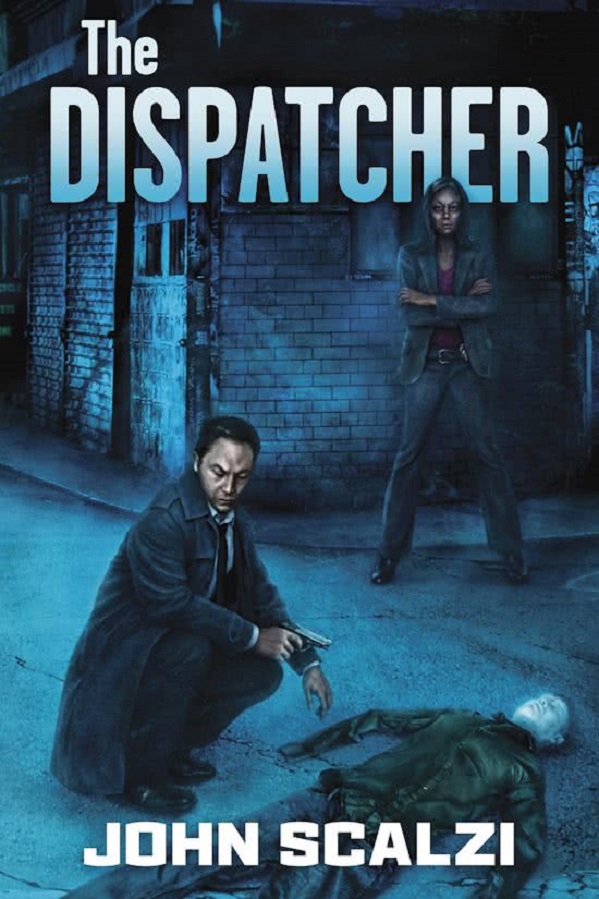 The Dispatcher, by John Scalzi (audio excerpt)
The Dispatcher, by John Scalzi (audio excerpt)
(likely not award-eligible, due to 2016 Audible release)
Subterranean Press, editor unknown; Audible version narrated by Zachary Quinto
cover art by Vincent Chong, design by Desert Isle Design
Synopsis: One day, not long from now, it becomes almost impossible to murder anyone – 999 times out of a thousand, anyone who is intentionally killed comes back. How? We don’t know. But it changes everything: war, crime, daily life. Tony Valdez is a Dispatcher – a licensed, bonded professional whose job is to humanely dispatch those whose circumstances put them in death’s crosshairs, so they can have a second chance to avoid the reaper. But when a fellow Dispatcher and former friend is apparently kidnapped, Tony learns that there are some things that are worse than death, and that some people are ready to do almost anything to avenge what they see as a wrong. It’s a race against time for Valdez to find his friend before it’s too late…before not even a Dispatcher can save him.
What I thought: If you can just roll with the utterly unbelievable premise, this is an enjoyable read – but I suspect that it will end up being one of Scalzi’s less successful attempts at expanding his oeuvre. I’m not sorry I read it, but I can’t enthuse about it, either.
Filer Comments:
- Kendall: I recommend John Scalzi’s The Dispatcher
- Anne Goldsmith: I think The Dispatcher was my favourite of these, but I may be giving it subconscious bonus points for being read aloud by Zachary Quinto.
- Cheryl S.: meh, it was fine but I’m not sure what got it so many five star reviews on Amazon
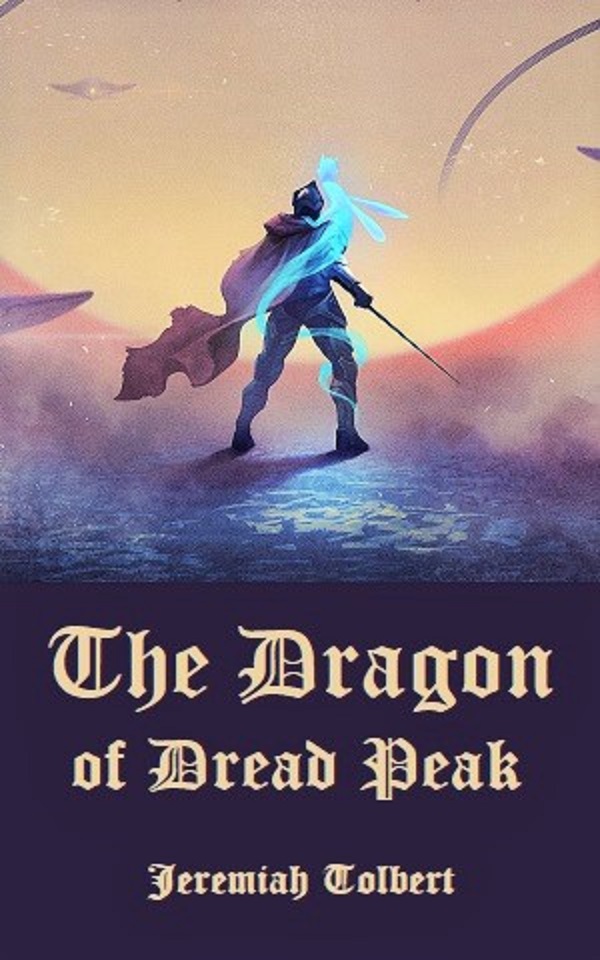 The Dragon of Dread Peak, by Jeremiah Tolbert (prequel The Cavern of the Screaming Eye) (full text Part 1 Part 2)
The Dragon of Dread Peak, by Jeremiah Tolbert (prequel The Cavern of the Screaming Eye) (full text Part 1 Part 2)
Lightspeed Magazine #89 October 2017, edited by John Joseph Adams
Illustration by Reiko Murakami
Synopsis: In a world where trans-dimensional portals from RPG universes have intruded upon and devastated the real world, children and teenagers are the defenders against the monsters and further encroachment. But the dangers in dungeonspace are real: Rash, who was an expert monster slayer, never came back from his last mission a year ago – one of many who have died trying to close down the portals. His younger brother, Flip, has secretly become a crawler in defiance of his mother’s grief – and with his inexperienced team, Flip has been taking on progressively more dangerous portals in the hope of finding and rescuing his brother. What’s more, a mysterious voice has been talking only to him inside of dungeonspace, its motives unknown.
What I thought: Despite not being a gamer, I enjoyed this story; I suspect that RPGers will like it even more. I highly recommend reading the short story prequel “The Cavern of the Screaming Eye” first, as it provides a little additional worldbuilding and characterization for this novella.
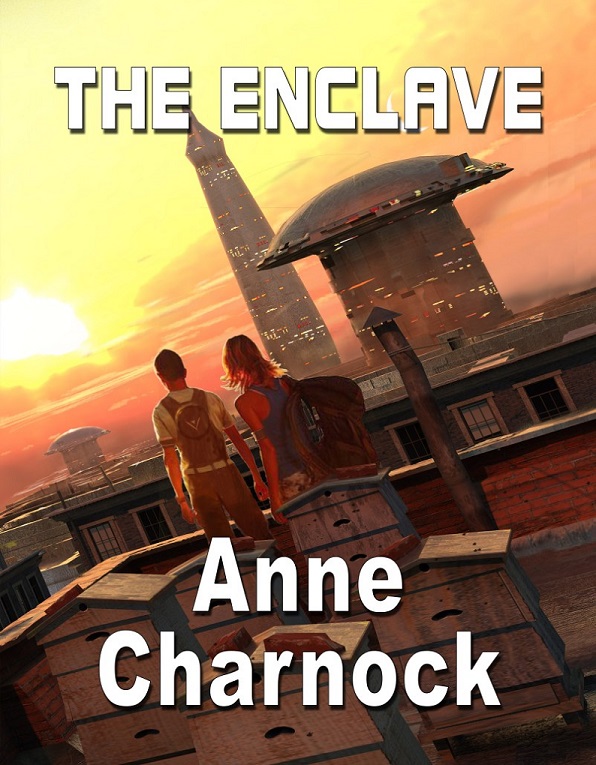 The Enclave, by Anne Charnock (no excerpt)
The Enclave, by Anne Charnock (no excerpt)
NewCon Press, edited by Ian Whates
cover art by Chris Moore, design by Andy Bigwood
Synopsis: Advances in genetic engineering have created a population free of addictive behaviour. Violent crime is rare. But out in the enclaves it’s survival of the fittest for Lexie – embroiled in a recycling clan and judged unfit for cognitive implants – and Caleb, a young climate migrant working as an illegal, who is eager to prosper and one day find his father.
What I thought: This is an interesting story, set in the same universe as A Calculated Life. I enjoyed it and found it solid but not outstanding.
 The Furthest Station, by Ben Aaronovitch [Rivers of London] (excerpt)
The Furthest Station, by Ben Aaronovitch [Rivers of London] (excerpt)
Subterranean Press / Gollancz, edited by Editor
cover art by Stephen Walters, design by Desert Isle Design
Synopsis: There have been ghosts on the London Underground, sad, harmless spectres whose presence does little more than give a frisson to travelling and boost tourism. But now there’s a rash of sightings on the Metropolitan Line and these ghosts are frightening, aggressive and seem to be looking for something. Enter PC Peter Grant, junior member of the Metropolitan Police’s Special Assessment unit a.k.a. The Folly a.k.a. the only police officers whose official duties include ghost hunting. Together with Jaget Kumar, his counterpart at the British Transport Police, he must brave the terrifying crush of London’s rush hour to find the source of the ghosts. Joined by Peter’s wannabe wizard cousin, a preschool river god and Toby the ghost hunting dog, their investigation takes a darker tone as they realise that a real person’s life might just be on the line. And time is running out to save them.
What I thought: This is a nice little standalone side mystery in the Rivers of London universe, quick and enjoyable – and minus any of the laddish, male-gazey aspects of the early novels in the series.
Filer Comments:
- Mark-kitteh: It’s very consistent with the rest of the series so if, like me, you’re a fan of the series then you’ll enjoy this. If you’ve found it’s not your cup of tea, then this won’t change your mind. The title refers to the fact that parts of the London Underground actually head out to some very far-flung places. (For a non-Londoner like me it’s a bit disconcerting to find yourself traveling through green fields on an “underground” train!) It doesn’t really advance the main plot significantly, but is a nice little mystery solved with a good combo of magic and real police work.
 Havergey, by John Burnside (excerpt)
Havergey, by John Burnside (excerpt)
Little Toller Monographs, editor unknown
cover art by Norman Ackroyd, designer unknown
Synopsis: A few years from now on the small and remote island of Havergey, a community of survivors from a great human catastrophe has created new lives and a new world in a landscape renewed after millennia of human exploitation. This is an exploration of what constitutes a utopia, a reminder of how precious and precarious our world is, and a rejection of the idea of human supremacy over landscape and wildlife.
What I thought: This is a bit like a near-future, post-apocalypse version of Thoreau’s Walden, in which a time traveler from our era arrives on an island populated by anarchist utopians who survived a devastating global plague, and consists mainly of manuscript readings of the colony’s historians with the traveler’s own personal musings. Fans of literary speculative fiction and philosophy may really enjoy it, but it’s definitely not an SF adventure.
 I Met a Traveller in an Antique Land, by Connie Willis (excerpt)
I Met a Traveller in an Antique Land, by Connie Willis (excerpt)
Asimov’s Science Fiction Nov-Dec 2017, edited by Sheila Williams
cover art by Bob Eggleton
Synopsis: An author, in New York City to meet with his publisher and do promotion for his book, takes refuge from a bad storm in a tiny used bookstore in an unfamiliar area of the city. But the store is much larger inside than it looks from the outside, and there’s clearly something mysterious going on.
What I thought: I’m a big Connie Willis fan, and I enjoyed this story, but honestly, it felt a lot like a re-tread mashup of some of her other stories, especially The Winds of Marble Arch. It’s clear very early on to the reader what is really going on (at least it was for me), so it didn’t have that feel of a mystery eventually followed by a discovery which has made a lot of her other stories so enjoyable for me. I thought it was worth reading, but not award-worthy.
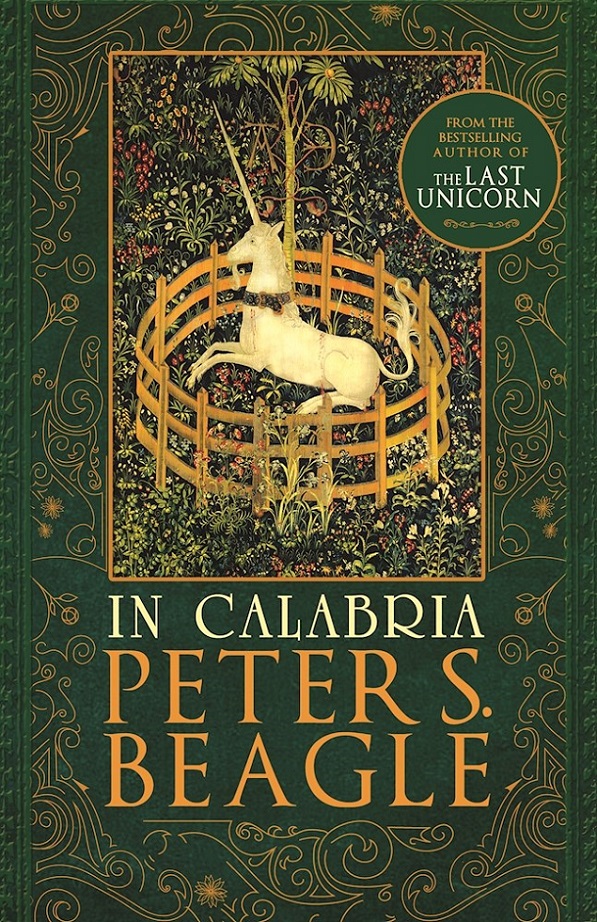 In Calabria, by Peter S. Beagle (excerpt)
In Calabria, by Peter S. Beagle (excerpt)
Tachyon Publications, edited by Rachel Fagundes
cover design by Elizabeth Story
Synopsis: Claudio Bianchi has lived alone for many years on a hillside in Southern Italy’s scenic Calabria. Set in his ways and suspicious of outsiders, Claudio has always resisted change, preferring farming and writing poetry. But one chilly morning, as though from a dream, an impossible visitor appears at the farm. When Claudio comes to her aid, an act of kindness throws his world into chaos. Suddenly he must stave off inquisitive onlookers, invasive media, and even more sinister influences.
What I thought: This is a lovely little fable and well worth reading, but did not come close to the level of The Last Unicorn for me.
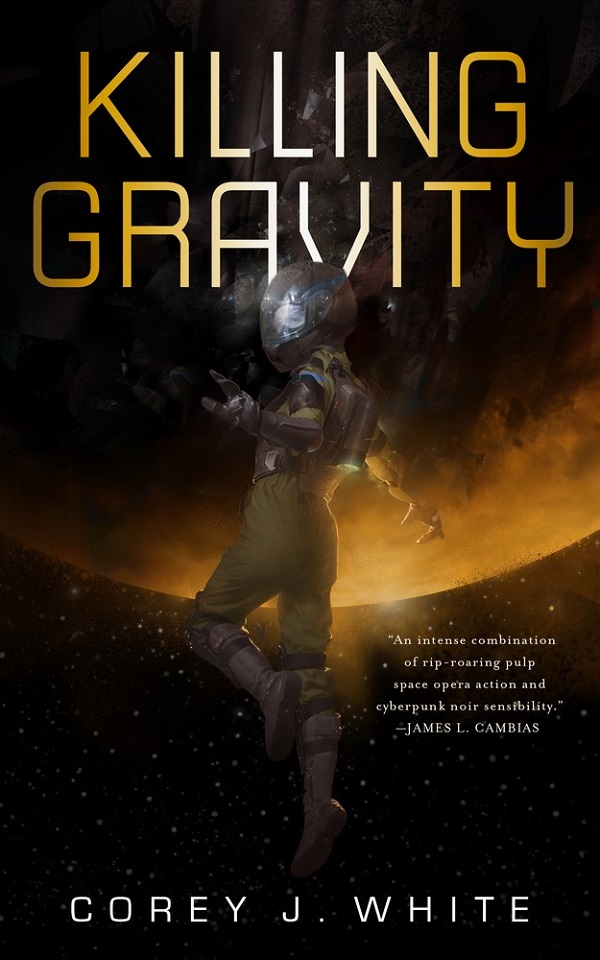 Killing Gravity, by Corey J. White [The Voidwitch Saga #1] (excerpt)
Killing Gravity, by Corey J. White [The Voidwitch Saga #1] (excerpt)
Tor.com Publishing, edited by Carl Engle-Laird
cover art by Tommy Arnold, design by Christine Foltzer
Synopsis: Before she escaped in a bloody coup, MEPHISTO transformed Mariam Xi into a deadly voidwitch. Their training left her with terrifying capabilities, a fierce sense of independence, a deficit of trust, and an experimental pet named Seven. She’s spent her life on the run, but the boogeymen from her past are catching up with her. An encounter with a bounty hunter has left her hanging helpless in a dying spaceship, dependent on the mercy of strangers. Penned in on all sides, Mariam chases rumors to find the one who sold her out. To discover the truth and defeat her pursuers, she’ll have to stare into the abyss and find the secrets of her past, her future, and her terrifying potential.
What I thought: The worldbuilding in this is pretty well-done, but I found it a little too predictable and tropey to reach the level of excellent. It’s well worth reading, though, and I’ll be picking up its sequel, Void Black Shadow, which comes out in March 2018.
Filer Comments:
- Mark-kitteh: This is probably going to suffer from being the novella I read after the excellent All Systems Red, but it was clever enough to cheat by having an exceptionally cute cat-like creature in it for bonus points. It’s a grimy sort of space opera setting, with mercs, bounty hunters, miserable planets and chaotic stations. The protagonist is Mariam Xi, nicknamed Mars, with her not-a-cat Seven. Mars is a powerful telekinetic and she’s permanently running from the big evil corp that made her that way. (You could make a lazy comparison to River Tam and Firefly at this point, but it’s a fairly different plot.) Anyway, shenanigans happen and there’s a rapid tour of various locations in the grimy space opera settings. I would say it’s solid rather than spectacular – none of the elements are especially original on their own but it’s all well put together. One thing that niggled was that her abilities kept on being just powerful enough for the situation, even if she’d dealt with much worse elsewhere in the story. It appears to be the start of a series but stood on its own well enough. I don’t see it troubling my novella shortlist, but on the other hand it appears to be the author’s professional debut – no short stories that I can see – and it was sufficiently interesting that they go onto my Campbell watch list.
 The Lamb Will Slaughter the Lion, by Margaret Killjoy [Danielle Cain #1] (excerpt)
The Lamb Will Slaughter the Lion, by Margaret Killjoy [Danielle Cain #1] (excerpt)
Tor.com Publishing, edited by Diana Pho
cover art by Mark Smith; design by Jamie Stafford-Hill
Synopsis: Searching for clues about her best friend’s mysterious suicide, Danielle ventures to the squatter, utopian town of Freedom, Iowa, and witnesses a protector spirit – in the form of a blood-red, three-antlered deer – begin to turn on its summoners. She and her new friends have to act fast if they’re going to save the town – or get out alive.
What I thought: This story features a great selection of diverse characters, but parts of the plot didn’t really work for me, and it definitely felt like a first novel to me. A sequel, The Barrow Will Send What it May, comes out in April 2018, but I probably won’t be picking it up.
Filer Comments:
- Bonnie McDaniel: This was an odd little book, and I’m including it because while I don’t think it was really for me, I imagine plenty of other people will like it. It’s a punk anarchist mindtrip, with plenty of zombified demon animals, and yes, it’s just as wacky as it sounds. Whether the story hangs together will depend on your tolerance of its collectivist anarchist mindset, but I appreciate that it’s an ambitious story that takes risks.
- Mark-kitteh: I wasn’t actually going to pick this out, but then it got strongly recced in several places and so I decided to give it a try – and I’m glad I did, because although it’s a bit uneven I found it really interesting. Danielle Cain travels to a small squatters town of utopian-minded anarchists to find out why her friend died. It turns out that the townsfolk have called up that which they cannot put down – a protector spirit in the form of a demonic deer which has started taking a very… abrupt… view of what protection means. I have to say that the concept didn’t grab me when I first heard about it, but actually it works really well. It’s a warts-and-all portrayal of this type of community – something well outside my experience – with the fantasy element rather acting as a metaphor for the problems that it throws up. This style of story lives and dies by the lead character, and Cain is well-drawn and interesting. I also liked that the fantasy element was very limited and mysterious – there’s not a whole menagerie of magic animals trotting around, just this one weird beast that someone created without really knowing what they were doing.
- Meredith: The imagery… has really stuck with me (I badly want someone to adapt it, it would look amazing), but I wish I’d come out of it feeling like I knew the viewpoint character, like, at all. There’s a bit about her being The Traveler, and I wondered whether that was a hint that she wasn’t human (anymore?) but sort of took on aspects of the people she travels with and that was why she never seemed like much of a person, but they never went anywhere with it, so… ¯\_(?)_/¯ (But I did like a lot of stuff about it! Characters just matter a lot to me as a reader. Probably still the third most interesting novella I’ve read this year, behind And Then There Were N-One and All Systems Red.)
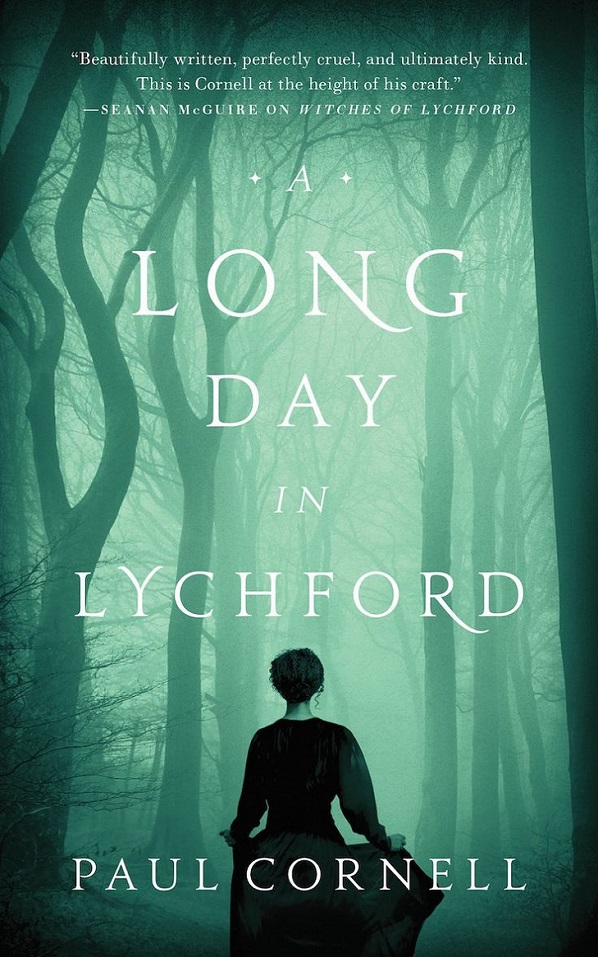 A Long Day in Lychford, by Paul Cornell [Lychford #3, sequel to #1 Witches of Lychford and #2 Lost Child of Lychford] (excerpt)
A Long Day in Lychford, by Paul Cornell [Lychford #3, sequel to #1 Witches of Lychford and #2 Lost Child of Lychford] (excerpt)
Tor.com Publishing, edited by Lee Harris
cover photograph by Mark Owen, cover design by FORT
Synopsis: It’s a period of turmoil in Britain, with the country’s politicians electing to remove the UK from the European Union, despite ever-increasing evidence that the public no longer supports it. And the small town of Lychford is suffering. But what can three rural witches do to guard against the unknown? And why are unwary hikers being led over the magical borders by their smartphones’ mapping software? And is the immigration question really important enough to kill for?
What I thought: I thought that Witches was great, and that Lost Child was very good (with the exception of the part with the consent-violating physical assault by the “good guys” against another character, which was pretty awful). But this one just didn’t really do it for me. It’s the story of a one-day ordeal experienced by the 3 main characters, but it felt forced and artificial and pointless to me.
Filer Comments:
- Kendall: Quoting myself: “I suspect I won’t enjoy it as much as the first two”. Well, I was wrong; it was very good! I’m not sure, but I may have enjoyed it more than the second one. It was depressing and made me sad, especially at the end, but it was well done. BTW this seemed shorter than the others (but I presume it’s still a novella). It’ll probably go into the novella cage match on my ballot.
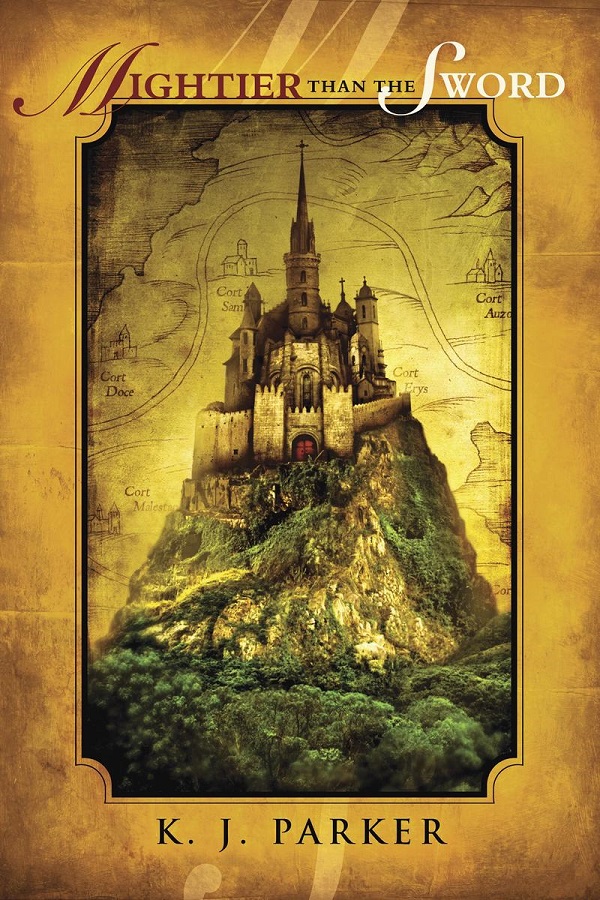 Mightier than the Sword, by K. J. Parker (no excerpt)
Mightier than the Sword, by K. J. Parker (no excerpt)
Subterranean Press, editor unknown
cover art by Vincent Chong, design by Desert Isle Design
Synopsis: An Imperial legate is called in to see his aunt, who just happens to be the empress running the civilized world while her husband’s in his sick bed. After some chastisement, she dispatches her nephew to take care of the dreaded Land and Sea Raiders, pirates who’ve been attacking the realm’s monasteries. So begins a possibly doomed tour of banished relatives and pompous royals put in charge of monasteries like Cort Doce and Cort Maleston, to name a few. While attempting to discover the truth of what the pirates might be after, the legate visits great libraries and halls in each varied locale and conducts a romance of which he knows – but doesn’t care – his aunt will not approve. With enough wit and derring-do (and luck), the narrator might just make it through his mission alive… or will he?
What I thought: I’ve really enjoyed the author’s other novellas, and this is another which is well worth reading for its sly humor and solid plotting.
 The Murders of Molly Southbourne, by Tade Thompson (excerpt)
The Murders of Molly Southbourne, by Tade Thompson (excerpt)
Tor.com Publishing, edited by Carl Engle-Laird
cover photograph by RekhaGarton, design by Christine Foltzer
Synopsis: Since she was a small child, Molly has learned that when she sheds blood, Molly-clones magically appear and try to kill her. Her parents have ingrained into her a protective routine to prevent extra Mollys from occurring, and for defending herself and eliminating them when they do occur. But as she gets older, the occurrences become more frequent, and they start to threaten people Molly cares about, too.
What I thought: This isn’t really my sort of thing, but the author actually manages to present a somewhat plausible explanation of the situation at the end of the story which made it interesting reading. If you’re into horror, it might be your sort of thing. Trigger Warning for huge amounts of blood and violence.
 Of Things Unknown, by Seanan McGuire [October Daye / April O’Leary] (no excerpt)
Of Things Unknown, by Seanan McGuire [October Daye / April O’Leary] (no excerpt)
(included with the novel The Brightest Fell)
DAW Books, edited by Sheila Gilbert
cover art by Chris McGrath
Synopsis: April O’Leary, (rot13’ed for those who have not yet read the second novel in the October Daye series, A Local Habitation) n qelnq jub abj rkvfgf cheryl nf n ploreorvat va gur pbzchgre flfgrz bs gur snrevr Pbhagl bs Gnzrq Yvtugavat, vf fgvyy zbheavat gur qrngu bs ure “zbgure”, VG theh Wnahnel B’Yrnel, naq frireny bs gur pbhagl’f bgure orybirq erfvqragf ng gur unaqf bs na rivy vagreybcre. Ohg jvgu Gbol’f uryc, gurer vf n cbffvovyvgl gung n erfheerpgvba, bs ng yrnfg fbzr bs gur ivpgvzf, pna or npuvrirq.
What I thought: I enjoyed this novella, which is a follow-on to the second novel in the October Daye series, A Local Habitation, and is a nice expansion on the personality of a secondary character in it. However, it would not stand alone well, and is only recommended to those who have read that book or who have read a lot of the stories in the series.
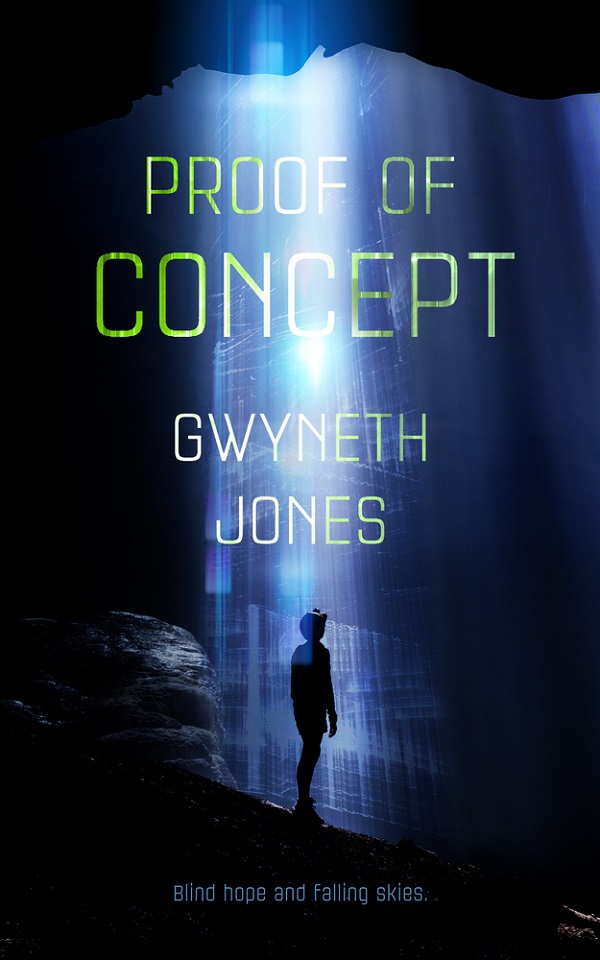 Proof of Concept, by Gwyneth Jones (excerpt)
Proof of Concept, by Gwyneth Jones (excerpt)
Tor.com Publishing, edited by Jonathan Strahan
cover by Drive Communication
Synopsis: On a desperately overcrowded future Earth, crippled by climate change, the most unlikely hope is better than none. Governments turn to Big Science to provide them with the dreams that will keep the masses compliant. The Needle is one such dream, an installation where the most abstruse theoretical science is being tested: science that might make human travel to a habitable exoplanet distantly feasible. When the Needle’s director offers her underground compound as a training base, Kir is thrilled to be invited to join the team, even though she knows it’s only because her brain is host to a quantum artificial intelligence called Altair. But Altair knows something he can’t tell. Kir, like all humans, is programmed to ignore future dangers. Between the artificial blocks in his mind, and the blocks evolution has built into his host, how is he going to convince her the sky is falling?
What I thought: I enjoyed this story, but not as much as I wanted to. It probably warranted a second read to put all the pieces into place once the ending is known, but I didn’t feel compelled to take the time to do so. Readers who find the synopsis appealing will probably enjoy it.
River of Teeth, by Sarah Gailey [River of Teeth #1] (excerpt)
Tor.com Publishing, edited by Justin Landon
cover art by Richard Anderson, design by Christine Foltzer
Synopsis: In the early 20th Century, the United States government concocted a plan to import hippopotamuses into the marshlands of Louisiana to be bred and slaughtered as an alternative meat source. This is true. Other true things about hippos: they are savage, they are fast, and their jaws can snap a man in two. This was a terrible plan. Contained within this volume is an 1890s America that might have been: a bayou overrun by feral hippos and mercenary hippo wranglers from around the globe. It is the story of Winslow Houndstooth and his crew. It is the story of their fortunes. It is the story of his revenge.
Filer Comments:
- Bonnie McDaniel: This has been mentioned before, but I’ll second (or third) it – what’s not to love about an alternate history weird Western with hippopotami? Also, I believe Sarah Gailey is still eligible for the Campbell (2nd year).
- Bruce Arthurs: enjoyed it a lot. I got the feeling that the plot structure was heavily influenced by television writing, rather than standard book plotting.
- Mark-kitteh: River of Teeth was fun. Perhaps the concept was a bit better than the execution, but still worth a read.
- Chris S.: pretty fun, good characters, great concept, extremely dodgy geography (naq abg rabhtu sreny uvccbf, frrzrq gb or n irel fznyy nern jurer gurl yvirq pbzcnerq gb jung gur znc fhttrfgf). I enjoyed it..
Taste of Marrow, by Sarah Gailey [River of Teeth #2] (excerpt)
Tor.com Publishing, edited by Justin Landon
cover art by Richard Anderson, design by Christine Foltzer
Synopsis: A few months ago, Winslow Houndstooth put together the damnedest crew of outlaws, assassins, cons, and saboteurs on either side of the Harriet for a history-changing caper. Together they conspired to blow the dam that choked the Mississippi and funnel the hordes of feral hippos contained within downriver, to finally give America back its greatest waterway. Songs are sung of their exploits, many with a haunting refrain: “And not a soul escaped alive.” In the aftermath of the Harriet catastrophe, that crew has scattered to the winds. Some hunt the missing lovers they refuse to believe have died. Others band together to protect a precious infant and a peaceful future. All of them struggle with who they’ve become after a long life of theft, murder, deception, and general disinterest in the strictures of the law.
What I thought: These are entertaining little Magnificent Sevenish stories, and the alternate history plotline of the hippos is interesting but rather peripheral to what are essentially standard tropey Westerns set in the Louisiana bayou. They’re readable, but I can’t rave about them.
Filer Comments:
- Peer: I’m happy to report that I enjoy this more than the first part: It still has the cool setting and the great characters AND it gets going much faster. Im not sure the story is that much deeper or original, but it works better because there is no more need of introduction. Fun, nice read!
- Mark-kitteh: The sequel to River of Teeth, picking the plot up shortly afterwards… if you liked the first one then pick this up, if you didn’t then I doubt this will improve your opinion. I do think it shows Gailey improving as a writer, as she weaves several storylines together with aplomb.
Snapshot, by Brandon Sanderson (excerpt)
Vault Books / Dragonsteel Entertainment, edited by Peter Orullian and Moshe Feder
cover art by Howard Lyon, design by Isaac Stewart
Synopsis: If you could re-create a day, what dark secrets would you uncover? Anthony Davis and his partner, Chaz, are the only real people in a city of 20 million, sent there by court order to find out what happened in the real world 10 days ago so that hidden evidence can be brought to light and located in the real city today. Within the re-created Snapshot of May 1, Davis and Chaz are the ultimate authorities. Flashing their badges will get them past any obstruction and overrule any civil right of the dupes around them. But the crimes the detectives are sent to investigate seem like drudgery – until they stumble upon the grisly results of a mass killing that the precinct headquarters orders them not to investigate. That’s one order they have to refuse. The hunt is on. And though the dupes in the replica city have no future once the Snapshot is turned off, that doesn’t mean that both Davis and Chaz will walk out of it alive tonight.
What I thought: This is another of what I have come to recognize as standard Sanderson storytelling. It’s a slick little plot along the same lines as Perfect State but better done; unfortunately, I didn’t find the surprise ending very surprising. Solid but not exceptional.
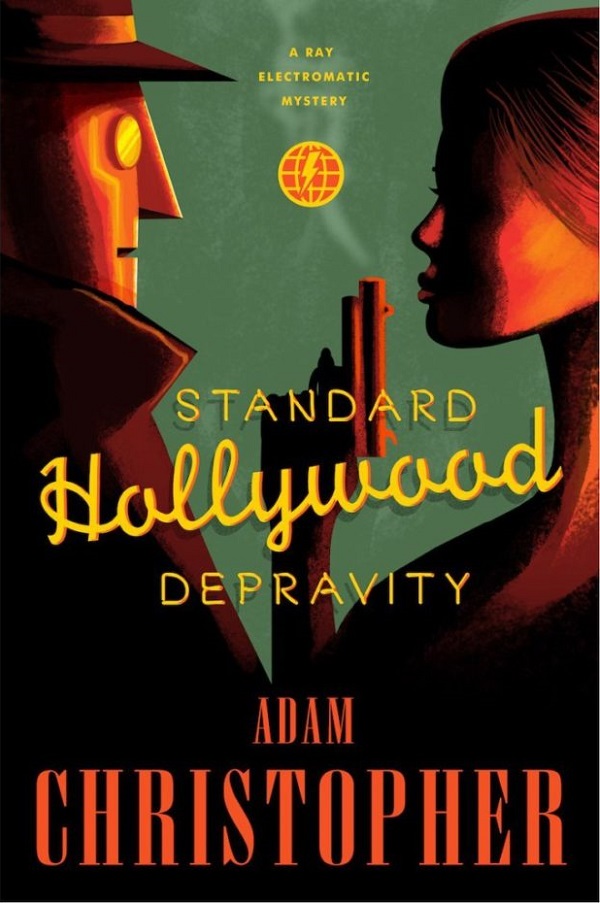 Standard Hollywood Depravity, by Adam Christopher [Ray Electromatic] (excerpt)
Standard Hollywood Depravity, by Adam Christopher [Ray Electromatic] (excerpt)
Tor.com Publishing, edited by Miriam Weinberg
cover art and design by Will Staehle
Synopsis: The moment Raymond Electromatic set eyes on her, he knew she was the dame marked in his optics, the woman that his boss had warned him about. Honey. As the band shook the hair out of their British faces, stomping and strumming, the go-go dancer’s cage swung, and the events of that otherwise average night were set in motion. A shot, under the cover of darkness, a body bleeding out in a corner, and most of Los Angeles’ population of hired guns hulking, sour-faced over un-drunk whiskey sours at the bar. But as Ray tries to track down the package he was dispatched to the club to retrieve, his own programming might be working against him, sending him down a long hall and straight into a mobster’s paradise. Is Honey still the goal – or was she merely bait for a bigger catch? Just your standard bit of Hollywood depravity, as tracked by the memory tapes of a less-than-standard robot hitman.
What I thought: This is a little noir mystery story featuring an android whose programming gets reset after every mission. Enjoyable but not spectacular (but I haven’t read the other stories in the series, which might make a difference).
Other 2017 Novellas:
Bearly a Lady, by Cassandra Khaw (excerpt)
Book Smugglers Publishing, edited by Ana Grilo and Thea James
cover art by Muna Abdirahman, design by Kenda Montgomery
Synopsis: Zelda McCartney (almost) has it all: a badass superhero name, an awesome vampire roommate, and her dream job at a glossy fashion magazine (plus the clothes to prove it). The only issue in Zelda’s almost-perfect life? The uncontrollable need to transform into a werebear once a month. Just when Zelda thinks things are finally turning around and she lands a hot date with Jake, her high school crush and alpha werewolf of Kensington, life gets complicated. Zelda receives an unusual work assignment from her fashionable boss: play bodyguard for devilishly charming fae nobleman Benedict (incidentally, her boss’s nephew) for two weeks. Will Zelda be able to resist his charms long enough to get together with Jake? And will she want to? Because true love might have been waiting around the corner the whole time in the form of Janine, Zelda’s long-time crush and colleague. What’s a werebear to do?
Filer Comments:
- Mark-kitteh: This is not the grim and disturbing Cassandra Khaw you might be expecting. In fact, this is a romcom featuring a Were-bear trying to get on in the big city (London in this case, although it could be NY just as easily) with job, romance, and life. Were-bear in the City, if you will. Anyway… a romcom isn’t really in my wheelhouse but I still enjoyed this – there’s a nice mix of competing life pressures for the lead character to juggle in a slightly madcap way. I suspect that if the lead character speaks to you more strongly than she did to me then you’ll like this very much.
The Black Tides of Heaven, by JY Yang [Tensorate] (excerpt)
Tor.com Publishing, editor unknown
cover art by Yuko Shimizu, design by Christine Foltzer
Synopsis: Mokoya and Akeha, the twin children of the Protector, were sold to the Grand Monastery as infants. While Mokoya developed her strange prophetic gift, Akeha was always the one who could see the strings that moved adults to action. While Mokoya received visions of what would be, Akeha realized what could be. What’s more, they saw the sickness at the heart of their mother’s Protectorate. A rebellion is growing. The Machinists discover new levers to move the world every day, while the Tensors fight to put them down and preserve the power of the state. Unwilling to continue as a pawn in their mother’s twisted schemes, Akeha leaves the Tensorate behind and falls in with the rebels. But every step Akeha takes towards the Machinists is a step away from Mokoya. Can Akeha find peace without shattering the bond they share with their twin?
What I thought: I found the large many-year gaps in the story and the lack of any real detail for a lot of the worldbuilding — and inconsistencies in the details we are given — to be pretty unsatisfying. The numerous inconsistencies in how and when genders are chosen, and the apparent contradiction between whether people are born with 1) no gender which is changed by drugs according to their choice, or 2) a biological gender, which is altered by drugs if the gender they choose does not match the gender with which they’re born, may not be worldbuilding flaws — but they sure seem like it.
As far as the day/night cycle goes, I’m quite willing to roll with the fantasy binary system or whatever causes two day/night cycles which are somehow different from each other — but it doesn’t make sense that their ancestors wouldn’t have evolutionarily adapted to that.
It may be that the intent here to bring out part of the story as a novella and later expand it to novel form by filling in the blanks. A lot of authors have done that, and I don’t really have a problem with it. But I kind of feel that I’m not getting a complete story in the novella form, which is something I expect (rather than getting an extract of a novel).
The Red Threads of Fortune, by JY Yang [Tensorate] (excerpt)
Tor.com Publishing, editor unknown
cover art by Yuko Shimizu, design by Christine Foltzer
Synopsis: Fallen prophet, master of the elements, and daughter of the supreme Protector, Sanao Mokoya has abandoned the life that once bound her. Once her visions shaped the lives of citizens across the land, but no matter what tragedy Mokoya foresaw, she could never reshape the future. Broken by the loss of her young daughter, she now hunts deadly, sky-obscuring naga in the harsh outer reaches of the kingdom with packs of dinosaurs at her side, far from everything she used to love. On the trail of a massive naga that threatens the rebellious mining city of Bataanar, Mokoya meets the mysterious and alluring Rider. But all is not as it seems: the beast they both hunt harbors a secret that could ignite war throughout the Protectorate. As she is drawn into a conspiracy of magic and betrayal, Mokoya must come to terms with her extraordinary and dangerous gifts, or risk losing the little she has left to hold dear.
The Book Club, by Alan Baxter (excerpt)
PS Publishing, editor unknown
cover art by Ben Baldwin, design by Michael Smith
Synopsis: Jason Wilkes s life takes a turn for the worse when his wife fails to come home from her book club. Jason calls Kate s book buddy , Dave, who assures him she left hours ago. Contacting the police, Jason finds them equal parts sympathetic and suspicious. He tells them almost everything, except that he s been hearing Kate s voice, calling as if from far away. He certainly doesn t mention that he s seeing shadows that reach for him. With the police getting nowhere fast, Jason takes matters into his own hands, even as nightmare images and Kate s distant cries continue to haunt his waking moments and his dreams, and the strange, grasping shadows persist. Jason begins to unravel the mystery, but he s at odds with the police, he s being lied to by Kate s book club friends, and his chances of finding Kate slip ever further away. It seems that everything is going to go as wrong as it possibly can.
Buffalo Soldier, by Maurice Broaddus (excerpt)
Tor.com Publishing, edited by Lee Harris
cover art by Jon Foster, design by Christine Foltzer
Synopsis: Having stumbled onto a plot within his homeland of Jamaica, former espionage agent, Desmond Coke, finds himself caught between warring religious and political factions, all vying for control of a mysterious boy named Lij Tafari. Wanting the boy to have a chance to live a free life, Desmond assumes responsibility for him and they flee. But a dogged enemy agent remains ever on their heels, desperate to obtain the secrets held within Lij for her employer alone.
Assassins, intrigue, and steammen stand between Desmond and Lij as they search for a place to call home in a North America that could have been.
Case of the Bedevilled Poet: A Sherlock Holmes Enigma, by Simon Clark (no excerpt)
NewCon Press, edited by Ian Whates
cover art by Vincent Sammy, design by Andy Bigwood
Synopsis: After narrowly escaping a bomb blast during the blitz in WW-II London, poet Jack Crofton is threatened with death and worse by a mysterious soldier. Fleeing through the war-torn streets, he seeks sanctuary in a pub and falls into company with two elderly gentlemen who claim to be Holmes and Watson, the real life detectives that inspired Conan Doyle’s fictions. Unconvinced but desperate, Jack shares his story, and Holmes agrees to take his case…
What I thought: This is definitely horror (which is generally not my thing), but I give it points for going off in an unexpected direction. It’s a Sherlock Holmes / Lovecraft mashup, and I think it would be enjoyable for a fan of either.
Cottingley, by Alison Littlewood (no excerpt)
NewCon Press, edited by Ian Whates
cover art by Vincent Sammy, design by Andy Bigwood
Synopsis: In 1917 the world was rocked by claims that two young girls – Elsie Wright and Frances Griffiths – had photographed fairies in the sleepy village of Cottingley. In 2017, a century later, we finally discover the true nature of these fey creatures. Correspondence has come to light that contains a harrowing account, written by village resident Lawrence Fairclough, laying bare the fairies’ sinister malevolence and spiteful intent.
The Emperor and the Maula, by Robert Silverberg (no excerpt)
Subterranean Press, editor unknown
cover art by Jim Burns, designer unknown
Synopsis: This is the story of a woman telling a story in order to extend – and ultimately preserve – her life. The Scheherazade of this striking story is Laylah Walis, denizen of a far-future Earth which has been invaded and conquered by a starfaring race known as the Ansaarans. Laylah is a “maula,” a barbarian forbidden, under pain of death, to set foot on the sacred home worlds of the imperial conquerors. Knowing the risks, Laylah travels to Haraar, home of the galactic emperor himself. Once there, she delays her execution by telling the emperor a story – and telling it well. That story, the tale within a tale that dominates this book, is, in fact, Laylah’s own story. It is also the story of the beleaguered planet Earth, of people struggling, often futilely, to oppose their alien masters and restore their lost independence.
Final Girls, by Mira Grant (excerpt)
Subterranean Press, editor unknown
cover art by Julie Dillon, designer unknown
Synopsis: What if you could fix the worst parts of yourself by confronting your worst fears? Dr. Jennifer Webb has invented proprietary virtual reality technology that purports to heal psychological wounds by running clients through scenarios straight out of horror movies and nightmares. In a carefully controlled environment, with a medical cocktail running through their veins, sisters might develop a bond they’ve been missing their whole liveswhile running from the bogeyman through a simulated forest. But… can real change come so easily? Esther Hoffman doubts it. Esther has spent her entire journalism career debunking pseudoscience, after phony regression therapy ruined her father’s life. She’s determined to unearth the truth about Dr. Webb’s budding company. Dr. Webb’s willing to let her, of course, for reasons of her own. What better advertisement could she get than that of a convinced skeptic? But Esther’s not the only one curious about how this technology works. Enter real-world threats just as frightening as those created in the lab. Dr. Webb and Esther are at odds, but they may also be each other’s only hope of survival.
Filer Comments:
- Lace: just finished [this], and I’m still unpacking some of my thoughts. There are aspects I found underdeveloped though not central, a central story with layers to its horror, and an ending and implications to think through. A scientist has immersive VR technology that’s being used to help people shed psychological trauma; a skeptical reporter comes to write a story about it. Matters develop from there. In general, I don’t like horror, and probably wouldn’t have read this without the combination of picking it up in a Humble Bundle, and generally enjoying Seanan McGuire. Probably worth a look and opinion from someone better suited to weighing it up.
The Girl Who Stole Herself, by R. Garcia y Robertson (excerpt)
Asimov’s Science Fiction Jul-Aug 2017, edited by Sheila Williams
cover art by Bob Eggleton
Synopsis: A young woman escapes being kidnapped by human traffickers to embark on an interplanetary space adventure.
The Girls With Kaleidoscope Eyes, by Howard V. Hendrix (excerpt)
Analog Science Fiction May-Jun 2017, edited by Trevor Quachri
cover art by NASA
Synopsis: A government agent must investigate and discover the truth in a case of an aborted bombing attack on a classroom full of girls.
Gwendy’s Button Box, by Richard Chizmar and Stephen King [Castle Rock] (excerpt)
Cemetary Dance, editor unknown
cover art by Ben Baldwin and illustrations by Keith Minnion, designer unknown
Synopsis: There are three ways up to Castle View from the town of Castle Rock: Route 117, Pleasant Road, and the Suicide Stairs. Every day in the summer of 1974, twelve-year-old Gwendy Peterson has taken the stairs, which are held by strong – if time-rusted – iron bolts and zig-zag up the precarious cliffside. Then one day when Gwendy gets to the top of Castle View, after catching her breath and hearing the shouts of kids on the playground below, a stranger calls to her. There on a bench in the shade sits a man in black jeans, a black coat, and a white shirt unbuttoned at the top. On his head is a small, neat black hat. The time will come when Gwendy has nightmares about that hat… The little town of Castle Rock, Maine has witnessed some strange events and unusual visitors over the years, but there is one story that has never been told – until now.
Heaven’s Covenant, by Bud Sparhawk (no excerpt)
Analog Science Fiction Sep-Oct 2017, edited by Trevor Quachri
cover art by Eldar Zakirov
Synopsis: In the run-up to a space colony mission, the expedition’s leader must unravel the threads of conspiracy and political intrigue which threaten it.
Homecoming, by Rachel Pollack [Jack Shade] (no excerpt)
Fantasy and Science Fiction Jan-Feb 2017, edited by C.C. Finlay
cover art by Charles Vess
Synopsis: A paranormal private investigator is hired by a woman to find her missing soul.
How Sere Picked Up Her Laundry, by Alexander Jablokov (excerpt)
Asimov’s Science Fiction Jul-Aug 2017, edited by Sheila Williams
cover art by Bob Eggleton
Synopsis: An investigator is hired to learn the cause of a mysterious death in a planetary colony.
What I thought: This is an interesting little murder mystery, and the author has done a good job of building a world and various alien races which differ markedly from our own. It’s got a bit of complexity to it, and I think it would benefit from a re-reading — and I enjoyed it enough that I will probably do so, once Hugo nominations open.
Ironclads, by Adrian Tchaikovsky (excerpt)
Solaris, edited by Jonathan Oliver
cover art by Maz Smith, designer unknown
Synopsis: Scions have no limits. Scions do not die. And Scions do not disappear. Sergeant Ted Regan has a problem. A son of one of the great corporate families, a Scion, has gone missing at the front. He should have been protected by his Ironclad – the lethal battle suits that make the Scions masters of war – but something has gone catastrophically wrong.
Now Regan and his men, ill equipped and demoralized, must go behind enemy lines, find the missing Scion, and uncover how his suit failed. Is there a new Ironclad-killer out there? And how are common soldiers lacking the protection afforded the rich supposed to survive the battlefield of tomorrow?
Filer Comments:
- Lace: A group of soldiers/grunts in a near-future war is sent to rescue a wealthy soldier, whose supersuit has inexplicably failed behind enemy lines. Some fun geopolitics, maybe a bit stretched but not cookie-cutter, and an asymmetric war with some eerie opposition. “Bugs” aren’t front and center in this one, but they have an enjoyable role.
Infernal Parade, by Clive Barker (no excerpt)
Subterranean Press, edited by Editor
cover art by and interior illustrations by Bob Eggleton, designer unknown
Synopsis: Convicted criminal Tom Requiem returns from the brink of death to restore both fear and a touch of awe to a complacent world. Tom becomes the leader of the eponymous “parade,” which ranges from the familiar precincts of North Dakota to the mythical city of Karantica. Golems, vengeful humans both living and dead, and assorted impossible creatures parade across these pages. The result is a series of highly compressed, interrelated narratives that are memorable, disturbing, and impossible to set aside.
The Keeper of the Dawn, by Dianna Gunn (excerpt)
Book Smugglers Publishing, edited by Ana Grilo and Thea James
cover art by Reiko Murakami, design by unknown
Synopsis: All Lai has ever wanted is to become a priestess, like her mother and grandmother before her, in service to their beloved goddess. That’s before the unthinkable happens, and Lai fails the trials she has trained for her entire life. She makes the only choice she believes she can: she runs away. From her isolated desert homeland, Lai rides north to the colder, stranger kingdom of Alanum – a land where magic, and female warriors, are not commonplace. Here, she hears tales about a mountain city of women guardians and steel forgers, worshiping goddesses who sound very similar to Lai’s own. Determined to learn more about these women, these Keepers of the Dawn, Lai travels onward to find their temple. She is determined to make up for her past failure, and will do whatever it takes to join their sacred order. Falling in love with another initiate was not part of the plan.
The Little Gift, by Stephen Volk (excerpt)
PS Publishing, editor unknown
cover art by Pedro Marques, designer unknown
Synopsis: I was Group Manager at forty-six with a Range Rover Evoque, a beautiful wife and two gorgeous, healthy children, and that was all I wanted. Or so I thought…This is the story of a man who takes a path to become the person he always wanted to be, but never believed he was. Fate takes a hand, a very special person enters his life and changes everything. Emboldened by an irrational passion he risks everything he thought he loved and valued – but the price is worth paying for happiness… Isn’t it?
The Man Who Put the Bomp, by Richard Chwedyk [Saur #5] (no excerpt)
Fantasy and Science Fiction Mar-Apr 2017, edited by C.C. Finlay
cover art by Bryn Barnard
Synopsis: Once they were an in-demand toy craze, but now genetically-engineered, sentient tiny dinosaurs which have escaped or been discarded live together in a community, where various plots, mysteries, and agendas intersect.
Mandelbrot the Magnificent, by Liz Ziemska (excerpt)
Tor.com Publishing, edited by Ann VanderMeer
cover art and design by Will Staehle
Synopsis: Born in the Warsaw ghetto and growing up in France during the rise of Hitler, Benoit Mandelbrot found escape from the cruelties of the world around him through mathematics. Logic sometimes makes monsters, and Mandelbrot began hunting monsters at an early age. Drawn into the infinite promulgations of formulae, he sinks into secret dimensions and unknown wonders. His gifts do not make his life easier, however. As the Nazis give up the pretense of puppet government in Vichy France, the jealousy of Mandelbrot’s classmates leads to denunciation and disaster. The young mathematician must save his family with the secret spaces he’s discovered, or his genius will destroy them.
Mapping the Interior, by Stephen Graham Jones (excerpt)
Tor.com Publishing, edited by Ellen Datlow
cover art by Greg Ruth, design by Christine Foltzer
Synopsis: Walking through his own house at night, a fifteen-year-old thinks he sees another person stepping through a doorway. Instead of the people who could be there, his mother or his brother, the figure reminds him of his long-gone father, who died mysteriously before his family left the reservation. When he follows it he discovers his house is bigger and deeper than he knew. The house is the kind of wrong place where you can lose yourself and find things you’d rather not have. Over the course of a few nights, the boy tries to map out his house in an effort that puts his little brother in the worst danger, and puts him in the position to save them… at terrible cost.
Native Seeds, by Catherine Wells (no excerpt)
Analog Science Fiction Nov-Dec 2017, edited by Trevor Quachri
cover art by Marianne Plumridge Eggleton
Synopsis: On a post-apocalyptic earth, two groups of survivors must find a way to work together to ensure the genetic diversity of threatened species.
Never Now Always, by Desirina Boskovich (excerpt)
Broken Eye Books, edited by Scott Gable, C. Dombrowski, and Matt Youngmark
cover art and design by Jeremy Zerfoss
Synopsis: A dark future finds humanity imprisoned. Invaders took away our story and rewrote everything: all minds, all lives, all history. Everyone forgot. How could this happen? But in this now, Lolo must reclaim her stolen words – her stolen family – from the silent Caretakers. She must call out to all rapt children, “This world is hell. Let’s run.” When the words needed are forgotten, lying unknown, when memories flit like smoke, how can she recover what is lost? She must. To live in this nightmare without a story would be too much to bear.
Nexus, by Michael F. Flynn (excerpt)
Analog Science Fiction Mar-Apr 2017, edited by Trevor Quachri
cover art by Tomislav Tikulin
Synopsis: The life of a time traveler obsessed with fixing the history he destroyed with his mistake intersects with that of several other humans, aliens and androids, all of whom have their own urgent agendas.
Not Far Enough, by Martin L. Shoemaker (no excerpt)
Analog Science Fiction Jul-Aug 2017, edited by Trevor Quachri
cover art by Rado Javor
Synopsis: The surviving members of disastrous Mars exploration mission must battle a rogue AI to get what they need to stay alive.
Plaisir d’Amour, by John Alfred Taylor (excerpt)
Analog Science Fiction Mar-Apr 2017, edited by Trevor Quachri
cover art by Tomislav Tikulin
Synopsis: A sociologist visits a low-gravity mining colony to study its genetically-engineered inhabitants, and falls in love with one of them despite the fact that there is no possibility for them of having a future together.
A Portrait of the Desert in Personages of Power, by Rose Lemberg [Birdverse] (full text)
Beneath Ceaseless Skies #229 July 2017, editor unknown
Synopsis: The Old Royal, a magical bigender being who has reigned for millenia, is threatened by the arrival of a young stranger.
Filer Comments:
The Process (Is a Process All Its Own), by Peter Straub (excerpt)
Subterranean Press, editor unknown
cover art and design by Michael Fusco Straub
Synopsis: This is the story of a 1950s Jack The Ripper, told from the killer’s perspective, with occasional glimpses into the perspectives of his victims.
The Proving Ground, by Alec Nevala-Lee (excerpt)
Analog Science Fiction Jan-Feb 2017, edited by Trevor Quachri
cover art by Kurt Huggins
Synopsis: In a near-future where rising sea-levels threaten existing cities, a woman hopes that an island will provide a safe haven for her community. But the birds are behaving very strangely, to the point of becoming threatening the future existence of the colony, and she needs to find out what’s causing their destructive behavior.
Reenu-You, by Michele Tracy Berger (excerpt)
Book Smugglers Publishing, edited by Ana Grilo and Thea James
cover art by Emma Glaze, designer unknown
Synopsis: New York City, August 1998. On a muggy summer day, five women wake up to discover purple scab-like lesions on their faces – a rash that pulses, oozes, and spreads in spiral patterns. City clinic doctors dismiss the women’s fears as common dermatitis, a regular skin rash. But as more women show up with the symptoms, one clear correlation emerges: an all-natural, first-of-its-kind hair relaxer called Reenu-You. As the outbreak spreads, and cases of new rashes pop up in black and latino communities throughout New York, panic and anger also grows. When the malady begins to kill, medical providers and the corporation behind the so-called hair tonic face charges of conspiracy and coercion from outraged minority communities and leaders across the country. At the heart of the epidemic are these five original women; each from different walks of life. As the world crumbles around them, they will discover more about each other, about themselves, and draw strength to face the future together.
Filer Comments:
- Arifel: Reenu-you by Michele Tracy Berger… [is] great.
Renegat, by Orson Scott Card [Ender’s Universe] (full text)
Infinite Stars, edited by Bryan Thomas Schmidt
cover art by Julia Lloyd
Synopsis: This Ender’s Universe story, a follow-on from Children of the Fleet, is told from Dabeet Ochoa’s point of view as he, Speaker for the Dead Ender, and Valentine try to solve a murder mystery on the planet Catalunya.
River’s Edge by James P. Blaylock [Langdon St. Ives] (no excerpt)
Subterranean Press, editor unknown
cover art by J.K. Potter, designer unknown
Synopsis: The body of a girl washes up on a mud bank along the edge of the River Medway amid a litter of poisoned fish and sea birds, casting an accusing shadow upon the deadly secrets of the Majestic Paper Mill and its wealthy owners. Simple answers to the mystery begin to suggest insidious secrets, and very quickly Langdon St. Ives and his wife Alice are drawn into a web of conspiracies involving murder, a suspicious suicide, and ritual sacrifice at a lonely and ancient cluster of standing stones. Abruptly St. Ives’s life is complicated beyond the edge of human reason, and he finds himself battling to save Alice’s life and the ruination of his friends, each step forward leading him further into the entanglement, a dark labyrinth from which there is no apparent exit.
Rupert Wong and the Ends of the Earth, by Cassandra Khaw [Gods and Monsters: Rupert Wong #2] (excerpt)
Abaddon Books, edited by David Moore
cover art by Sam Gretton, design by Sam Gretton and Oz Osborne
Synopsis: For a man who started a celestial war, Rupert Wong, Seneschal of Kuala Lumpur and indentured cannibal chef, isn’t doing too badly for himself. Sure, his flesh-eating bosses inexplicably have him on loan to the Greek pantheon, the very gods he thrust into interethnic conflict. Sure, the Chinese Hells have him under investigation for possible involvement in the fracas. And sure as hell, he’s already elbow-deep in debt with the Sisyphean gambling ring. But Rupert is alive. For now. Really, it could be slightly worse.
Snowspelled, by Stephanie Burgis [The Harwood Spellbook #1] (excerpt)
Five Fathoms Press, editor unknown
cover art by Leesha Hannigan, design by Patrick Samphire
Synopsis: Four months ago, Cassandra Harwood was the first woman magician in Angland, and she was betrothed to the brilliant, intense love of her life. Now Cassandra is trapped in a snowbound house party deep in the elven dales, surrounded by bickering gentleman magicians, manipulative lady politicians, her own interfering family members, and, worst of all, her infuriatingly stubborn ex-fiancé, who refuses to understand that she’s given him up for his own good. But the greatest danger of all lies outside the manor in the falling snow, where a powerful and malevolent elf-lord lurks…and Cassandra lost all of her own magic four months ago. To save herself, Cassandra will have to discover exactly what inner powers she still possesses – and risk everything to win a new kind of happiness.
Filer Comments:
- Lace: First-in-series in a Regency-esque England where the humans are at truce with the elves, and women handle the politicking while men do the magic. For me, it almost felt like its own prequel – a lot of fun world-building setting up future installments, but not too much happens. I’ll probably be back to see where Burgis goes from here. If you enjoy Kowal’s Glamourist Histories or Cho’s Sorcerer to the Crown, or Burgis’s other work, you should take a look.
A Song for Quiet, by Cassandra Khaw [Persons Non Grata #2] (excerpt)
Tor.com Publishing, edited by Carl Engle-Laird
cover art by Jeffrey Alan Love, design by Christine Foltzer
Synopsis: Deacon James is a rambling bluesman straight from Georgia, a black man with troubles that he can’t escape, and music that won’t let him go. On a train to Arkham, he meets trouble – visions of nightmares, gaping mouths and grasping tendrils, and a madman who calls himself John Persons. According to the stranger, Deacon is carrying a seed in his head, a thing that will destroy the world if he lets it hatch. The mad ravings chase Deacon to his next gig. His saxophone doesn’t call up his audience from their seats, it calls up monstrosities from across dimensions. As Deacon flees, chased by horrors and cultists, he stumbles upon a runaway girl, who is trying to escape the destiny awaiting her. Like Deacon, she carries something deep inside her, something twisted and dangerous. Together, they seek to leave Arkham, only to find the Thousand Young lurking in the woods. The song in Deacon’s head is growing stronger, and soon he won’t be able to ignore it any more.
The Speed of Belief, by Robert Reed [The Great Ship Universe] (no excerpt)
Asimov’s Science Fiction Jan-Feb 2017, edited by Sheila Williams
cover art by Maurizio Manzieri
Synopsis: Travelers on a journey to negotiate with a new alien race for new resources must try to salvage their mission when everything goes horribly awry.
The Squirrel on the Train, by Kevin Hearne [Iron Druid / Oberon’s Meaty Mysteries #2] (no excerpt)
Subterranean Press, editor unknown
cover art by Galen Dara, designer unknown
Synopsis: Oberon the Irish wolfhound is off to Portland to smell all the things with canine companions wolfhound Orlaith and Boston terrier Starbuck, and, of course, his human, ancient Druid Atticus O’Sullivan. The first complication is an unmistakable sign of sinister agendas afoot: a squirrel atop the train. But an even more ominous situation is in store when the trio plus Atticus stumble across a murder upon arrival at the station. They recognize Detective Gabriela Ibarra, who’s there to investigate. But they also recognize the body – or rather that the body is a doppelganger for Atticus himself. The police, hampered by human senses of smell and a decided lack of canine intuition, obviously can’t handle this alone. Not with Atticus likely in danger. Oberon knows it’s time to investigate once more – for justice! For gravy! And possibly greasy tacos!
Stillborne, by Marc Laidlaw [Gorlen Vizenfirth] (excerpt)
Fantasy and Science Fiction Nov-Dec 2017, edited by C.C. Finlay
cover art by Kent Bash
Synopsis: The bard Gorlen Vizenfirthe has been cursed — his hand replaced with the stone paw of a gargoyle named Spar, who is reciprocally afflicted. Together, the two of them search for a cure to their problem and frequently end up in fresh varieties of trouble. In this story, which is perhaps the series finale, Gorlen and Spar travel to join the swarm of the Philosopher Moths: giant insects with telepathic powers, who may be able to finally give them a cure for their curse.
The Strange Bird by Jeff VanderMeer [Borne] (excerpt)
MCD/FSG, edited by Sean McDonald
cover design by Abby Kagan
Synopsis: The Strange Bird is a new kind of creature – she is part bird, part human, part many other things. But now the lab in which she was created is under siege and the scientists have turned on their animal creations. But, even if she escapes, she cannot just soar in peace above the earth. The farther she flies, the deeper she finds herself in the orbit of the Company, a collapsed biotech firm that has populated the world with experiments both failed and successful: a pack of networked foxes, a giant predatory bear. But of the many creatures she encounters, it is the humans – all of them now simply scrambling to survive – who are the most insidious, who still see her as simply something to possess, to capture, to trade, to exploit. Never to understand, never to welcome home.
Strange Dogs, by James S. A. Corey [The Expanse] (excerpt)
Orbit Books, edited by Will Hinton
cover art and design by Kirk Benshoff
Synopsis: Like many before them, Cara and her family ventured through the gates as scientists and researchers, driven to carve out a new life and uncover the endless possibilities of the unexplored alien worlds now within reach. But soon the soldiers followed – and under this new order, Cara makes a discovery that will change everything.
Sunwake, in the Lands of Teeth, by Juliette Wade (full text)
Clarkesworld #127 June 2017, edited by Neil Clarke
cover art by Eddie Mendoza
Synopsis: A member of an alien race which resembles dogs, who has made friends with human visitors, must undertake a dangerous rescue mission to bring back his human friend in time for a meeting with his ruler.
Tao Zero, by Damien Broderick (no excerpt)
Asimov’s Science Fiction Mar-Apr 2017, edited by Sheila Williams
cover art by Tomislav Tikulin
Synopsis: The children of two families immersed in different aspects of the Tao philosophy must come together to save the world.
Taste of Ashes, by Charles E. Gannon [Tales of the Terran Republic / Caine Riordan] (no excerpt)
Infinite Stars, edited by Bryan Thomas Schmidt
cover art by Julia Lloyd
Synopsis: This story is set in the author’s Caine Riordan universe; it appears to be an excerpt of the first book in the series, Fire with Fire, about humans’ first encounter with several more advanced races of aliens who have formed an interstellar alliance.
Temporary Duty Assignment, by A.E. Ash (prequel Nice) (no excerpt)
Book Smugglers Publishing, edited by Ana Grilo and Thea James
cover art by Reiko Murakami, design by Kenda Montgomery
Synopsis: Samantha Gao is an elite Metro soldier, dedicated to the job and to her team. But following a devastating mission, Sam is handed a new temporary duty assignment. On paper, she’s supposed to babysit a Metro tech-inspector during a routine evaluation of Greenerhouse seed colony’s corporate sponsor. Sam expects to be on duty at all times, ready for whatever comes. But what she didn’t expect was to see him – Caleb – again. Caleb Estes is an engineer at Greenerhouse and cannot believe his luck when his first love, Samantha Gao, walks into his lab – and back into his life. It’s enough to make him believe in second chances after all. But Sam and Caleb’s reconciliation will have to wait when the routine bodyguard job goes sideways, and the future of the seed colony itself is at stake…
There Was a Crooked Man, He Flipped a Crooked House, by David Erik Nelson (no excerpt)
Fantasy and Science Fiction Jul-Aug 2017, edited by C.C. Finlay
cover art by Nicholas Grunas
Synopsis: The employee of a professional house renovator/flipper is sent to evaluate a gorgeous old mansion as a possible new project, but the house turns out to be an extra-dimensional horror.
The Twilight Pariah, by Jeffrey Ford (excerpt)
Tor.com Publishing, edited by Ellen Datlow
cover photograph by Roy Bishop, design by Christine Foltzer
Synopsis: All Maggie, Russell, and Henry wanted out of their last college vacation was to get drunk and play archaeologist in an old house in the woods outside of town. When they excavate the mansion’s outhouse they find way more than they bargained for: a sealed bottle filled with a red liquid, along with the bizarre skeleton of a horned child. Disturbing the skeleton throws each of their lives into a living hell. They feel followed wherever they go, their homes are ransacked by unknown intruders, and people they care about are brutally, horribly dismembered. The three friends awakened something, a creature that will stop at nothing to retrieve its child.
Published through Tor.com’s Novella line, but NOT novellas
- The Fortress at the End of Time, by Joe M. McDermott
- Switchback, by Melissa F. Olson
- A Red Peace, by Spencer Ellsworth [Starfire #1]
- Shadow Sun Seven, by Spencer Ellsworth [Starfire #2]
Discover more from File 770
Subscribe to get the latest posts to your email.

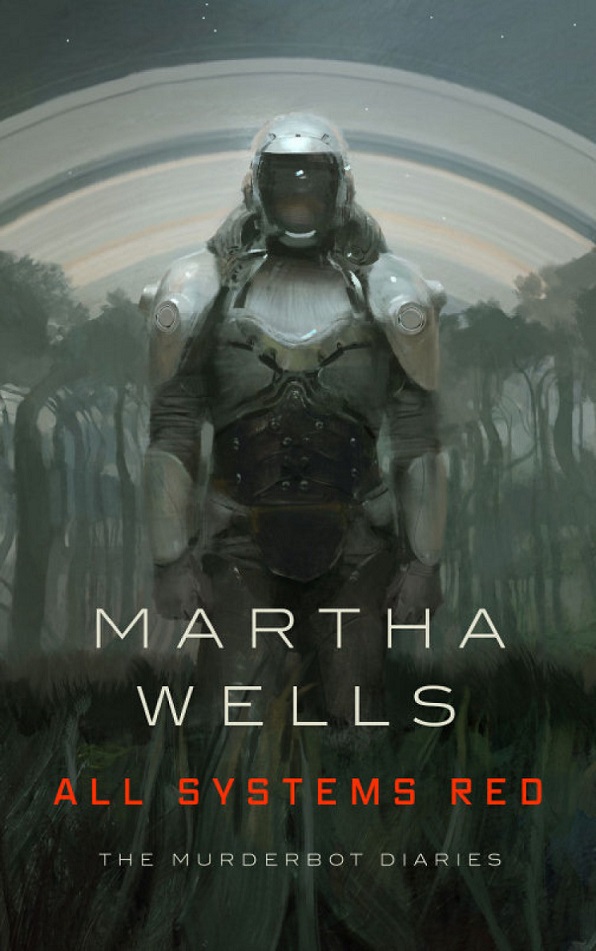
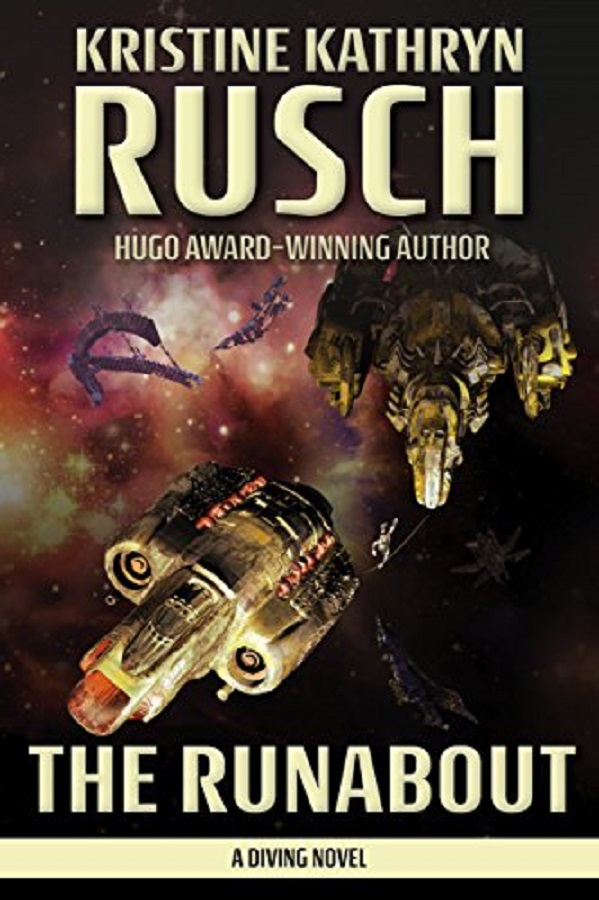

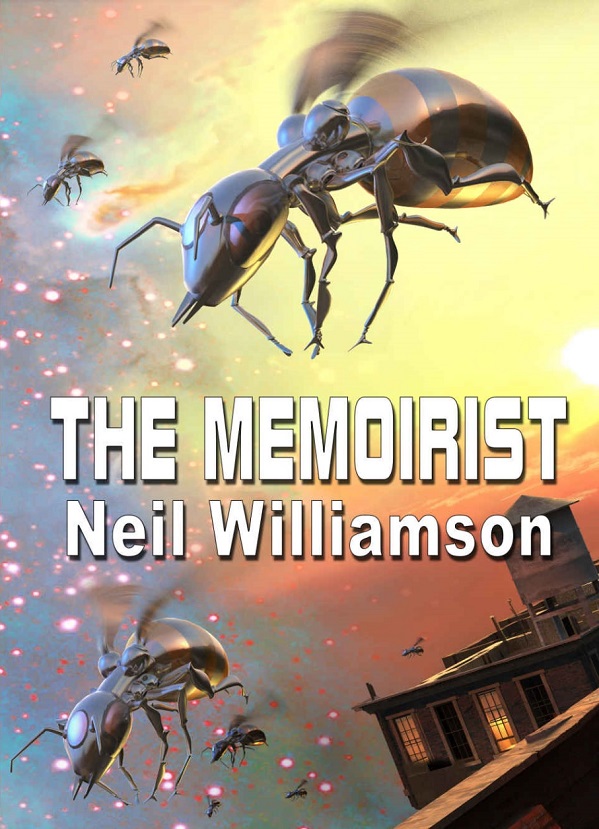
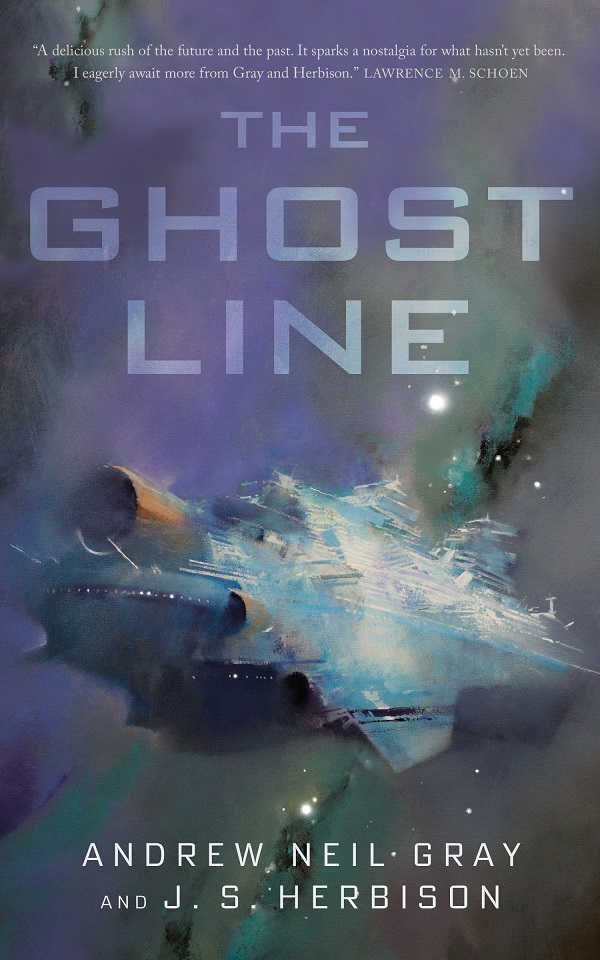










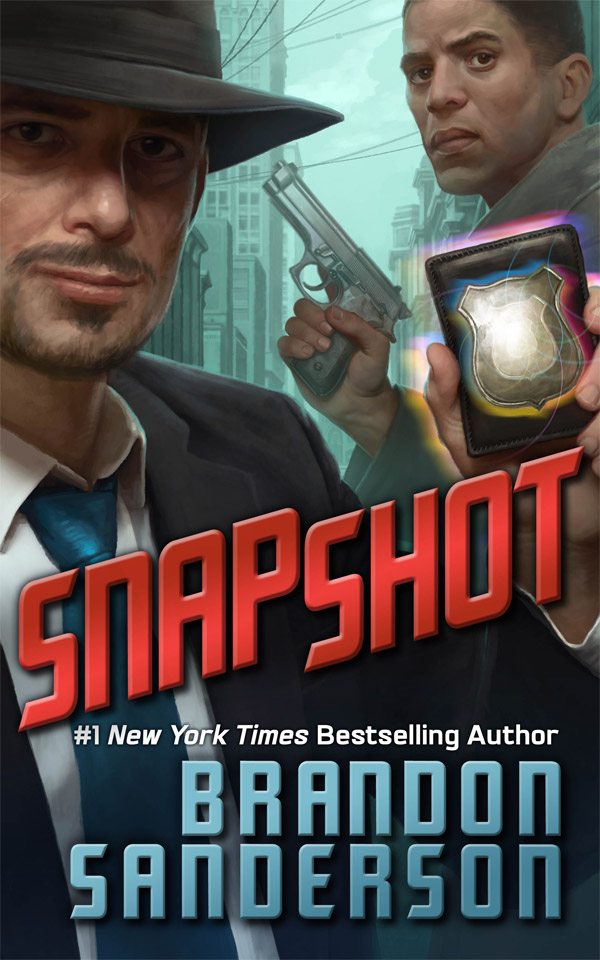
The Adventure of the Incognita Countess by Cynthia Ward
Part of my quest to try different sources for novellas lead me to Conversation Pieces, although as this is #53 in their series I should perhaps be slightly bashful about never having seen them before.
This is a pulp-mashup as Lucy Harker (yes, that Harker family), spy and half-vampire, seeks out German spies on a Titanic powered by Martian Heat rays and encounters an incognito Countess Karnstein (whose name might be an anagram of Carmilla…you get the idea.) It was good fun and a lot better written than pulpy fare usually gets. I was particularly taken by the magnetic relationship that develops between Lucy and the Countess. Unlikely to trouble my shortlist but I don’t regret trying it.
(roughly 29k words)
—-
(Addendum to Girl Reporter review above, I make it approx 31,500 words)
The Black Tides of Heaven/The Red Threads of Fortune, by JY Yang
I may be in a bit of a minority about these. I loved the worldbuilding but the actual stories didn’t really do it for me, although Threads ramped up the plotting quite well.
I don’t think they were well-served by their structure, either the two-volume “twin stories” marketing, or the internal structure of each one. Black Tides has to present the origin of both characters and then finish up focusing on only one, while Threads picks up the other one after some character defining events.
I’d like to see more of the world, and I generally like Yang’s work, e.g. Waiting on a Bright Moon, but these didn’t hit the spot for me.
Wanted to recommend Raising the Sea-Drowned by E. Saxey, in The Fantasist, a fun dark comedy about a very well drawn London IT startup that turns nightmarish.
Full disclosure: my story is in this same issue, but I realized it is not a novella but a novelette, and therefore cannot be recommended in this thread. 🙁
Ironclads, by Adrian Tchaikovsky
Exciting MilSF with an uneasy touch of political satire. This near-future war being controlled by corporate interests puts me in mind of Linda Nagata’s recent works (or maybe the corporatism strand of old cyberpunk settings) but Tchaikovsky makes the analogy a bit balder by adding in Scions – the favoured sons of corporations who get to fight in mecha that are so much better than anything the Poor Bloody Infantry get to use that they are effectively unkillable.
Our motley crew of PBI get sent on a Saving Private Ryan mission to find out what’s happened to an inexplicably missing Scion. Once the action starts then it’s very exciting stuff and overall this is a strong novella. However, if you only read one short Tchaikovsky MilSF then read his recent short novel Dogs of War instead – it’s the superior of the two. If you read two then this one is still pretty good though.
(c37,500 words)
Raising the Sea-Drowned by E. Saxey
(h/t to Jayn above. I make it just over 18,000 words so it squeaks into novella by a nose)
When Dil is hired as IT guy by a start-up in London’s trendy Shoreditch he reckons they won’t last because there’s no way a good firm would employ a newb like him. He’s even more certain when he finds out that their product is to be a social network based around sharing your dreams, so when it becomes strangely popular he gets worried, especially as strange things start happening…
This starts out as a black comedy with some IT biz satire (which reminded me of Stross in parts), and slowly becomes just black and rather creepy. It’s quite slow-burning but Dil is a good character whose voice really brought me into the story. I’m not sure if the uncertain ending will satisfy everyone, but it worked for me.
—-
I also liked Jayn’s novelette in the same issue. I hadn’t come across The Fantasist magazine before; it bills itself as “A Magazine of Fantasy Novellas” and I may have to check it out some more.
Thank you Mark-kitteh!
I just did a word count on Binti: The Night Masquerade, and I get 47,885 words, which puts it over the limit for the nebula category for the Hugo awards this year, although it would just edge under the new 48,000-word limit that will go into effect for next year if Nick Whyte’s and my amendment gets approved in San Jose this year.
Greg Hullender: I just did a word count on Binti: The Night Masquerade, and I get 47,885 words
Binti: The Night Masquerade has a publication date of 2018, so it’s not eligible for this year’s Hugos (Binti: Home is). But thanks for providing that word count; I’ll be sure to make a note of it for the 2018 Novellapalooza.
Ah, so it will likely be eligible after all, assuming the amendment passes. (It passed without serious discussion in Helsinki.)
Someone else should double-check the word count. (And sorry to hijack space here in the 2017 section.)
Greg Hullender: Ah, so it will likely be eligible after all, assuming the amendment passes.
I’m planning on voting for the threshold alteration; hopefully, others will as well.
Greg Hullender: And sorry to hijack space here in the 2017 section.
Not a problem — having it mentioned will prevent anyone from mistakenly using a nomination ballot space on it. 🙂
It’s been mentioned elsewhere, but I just noticed that nobody has mentioned in this thread that a boatload of Tor novellas, including several listed in this thread, are currently on sale for $1.99 at various venues. I don’t know for how long the sale continues.
Go here and scroll to the sff section:
http://macmillanedeals.com/
@Contrarius: Thanks for posting that! I’d gotten a note from them about a bunch of gaming tie-in books being on sale, but I didn’t realize some other SFF was also on sale. W00T!
Just read Mapping the Interior. It’s a solid horror story – and tangentially much more solidly horror than Mongrels, the only other thing I’ve read from this author. It’s also got some mild SF, in the gvzr geniry ryrzrag. I haven’t read enough 2017 novellas to know if I’d put it on my list, but I recommend it.
I just read The Ghost Line by Andrew Neil Gray & J.S. Herbison, from Tor.com. I started with the excerpt from Tor.com’s “Summer of Space Opera Sampler” and then snapped it up. It was very good – the characters, the sense of place, the slow build up, and the finale all worked great for me.
I read a lot (for me) of good novellas this year; this one’s definitely a contender, but paring my list down to five will be tough. 😉
I finished Dave Hutchinson’s Acadie last night and liked it a lot. 🙂 I’m not sure where it falls in my novella list for 2017, but it’s not completely out of the running for my Hugo ballot.
I’m not interested in Hutchinson’s “Europe” trilogy (not my kind of thing), but if he writes more novella- or novel-length future SF, I’ll check it out. He has a book from a while back called The Push, but it’s $70 (paperback) or $1500 (hardback). Yipes! No thanks. Limited edition special publication, I guess.